
To learn more and access a sample of the digital resources and teacher materials that support the series, visit: oup.com.au/vcepsych
PSYCHOLOGY PAIGE JESSULAT LEO HONG UNITS 1 & 2 JODIE ALLEN ELIZABETH BLAHER-LUCAS MATTHEW ROCK KERRI MOREY FOR VCE ROGER
EDWARDS
UNCORRECTED SAMPLE CHAPTER
This sample is provided for inspection purposes.
Oxford University Press is a department of the University of Oxford. It furthers the University’s objective of excellence in research, scholarship, and education by publishing worldwide. Oxford is a registered trademark of Oxford University Press in the UK and in certain other countries.
Published in Australia by Oxford University Press
Level 8, 737 Bourke Street, Docklands, Victoria 3008, Australia.
© Paige Jessulat, Leo Hong, Jodie Allen, Elizabeth Blaher-Lucas, Matthew Rock, Kerri Morey & Roger Edwards
© Oxford University Press 2024
The moral rights of the author/s have been asserted
First published 2024
All rights reserved. No part of this publication may be reproduced, stored in a retrieval system, or transmitted, used for text and data mining, or used for training artificial intelligence, in any form or by any means, without the prior permission in writing of Oxford University Press, or as expressly permitted by law, by licence, or under terms agreed with the reprographics rights organisation. Enquiries concerning reproduction outside the scope of the above should be sent to the Rights Department, Oxford University Press, at the address above.
You must not circulate this work in any other form and you must impose this same condition on any acquirer.

ISBN 9780190338015
Reproduction and communication for educational purposes
The Australian Copyright Act 1968 (the Act) allows educational institutions that are covered by remuneration arrangements with Copyright Agency to reproduce and communicate certain material for educational purposes. For more information, see copyright.com.au.
Edited by Katie Lawry
Typeset by Q2A Media Services Pvt. Ltd., Noida, India
Proofread by Vanessa Lanaway
Indexed by Master Indexing
Printed in China by Golden Cup Printing Co Ltd
Oxford University Press Australia & New Zealand is committed to sourcing paper responsibly.
Disclaimer
DRAFT
Links to third party websites are provided by Oxford in good faith and for information only. Oxford disclaims any responsibility for the materials contained in any third party website referenced in this work.
Acknowledgement of Country
Oxford University Press acknowledges the Traditional Owners of the many lands on which we create and share our learning resources. We acknowledge the Traditional Owners as the original storytellers, teachers and students of this land we call Australia. We pay our respects to Elders, past and present, for the ways in which they have enabled the teachings of their rich cultures and knowledge systems to be shared for millennia.
Warning to First Nations Australians
Aboriginal and Torres Strait Islander peoples are advised that this publication may include images or names of people now deceased.
No part of this publication may be reproduced, stored in a retrieval system or transmitted in any
form or by any means.
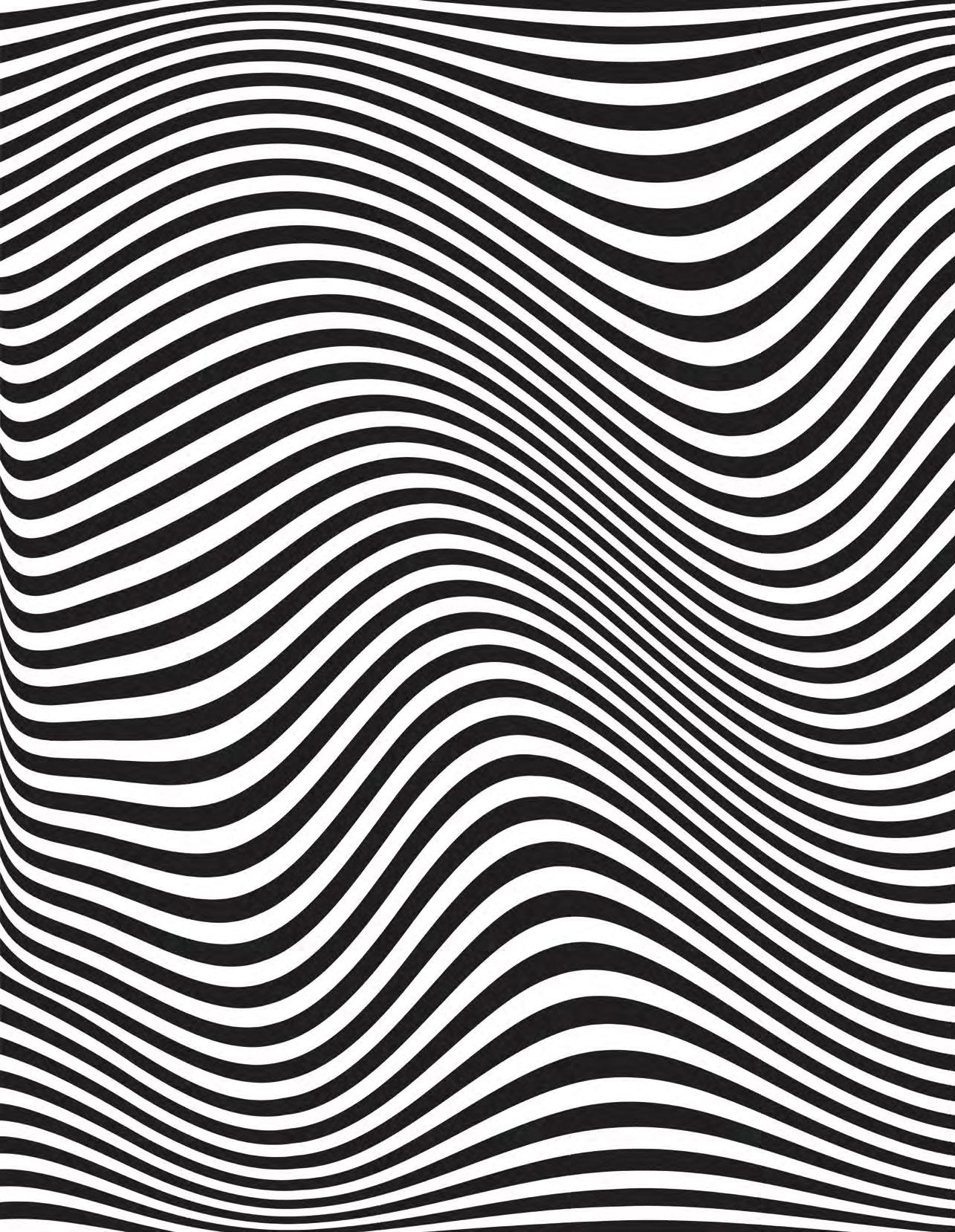
Using Psychology for VCE Units 1 & 2 vi Meet the authors & reviewers xii Chapter 1 Psychology toolkit 2 1.1 Overview of VCE Psychology 4 1.2 Developing aims, questions and hypotheses 9 1.3 Planning and conducting investigations 14 1.4 Complying with ethics and safety requirements ............................................... 25 1.5 Generating, collating and recording data 30 1.6 Organising, presenting and processing data 35 1.7 Analysing and evaluating data and investigation methods 43 1.8 Constructing evidence-based arguments and conclusions 47 1.9 Analysing and evaluating scientific ideas .......................................................... 52 1.10 Communicating scientific ideas ................. 56 1.11 Aboriginal and Torres Strait Islander knowledges, cultures and histories 59 1.12 Preparing for assessment ........................... 66 Chapter 1 Review 70 UNIT 1 HOW ARE BEHAVIOUR AND MENTAL PROCESSES SHAPED? .......................................... 74 Chapter 2 The complexity of psychological development.............. 76 2.1 The impact of hereditary and environmental factors on psychological development.............. 78 2.2 The biopsychosocial model of psychological development 83 2.3 Emotional development over the lifespan ............................................................... 88 2.4 Cognitive development over the lifespan 94 2.5 Social development over the lifespan 101 2.6 Sensitive and critical periods 107 Chapter 2 Review 110 Chapter 3 Defining and supporting psychological development............. 114 3.1 Psychological criteria used to categorise behaviour 116 3.2 Normality and neurotypicality 122 3.3 Normal variations of brain development .................................................. 127 3.4 The role of health professionals in supporting psychological development and mental wellbeing 133 3.5 Diagnosing and managing atypical behaviour 138 Chapter 3 Review 146 Unit 1 AOS 1 Checkpoint ................ 150 Chapter 4 The role of the brain in mental processes and behaviour 158 4.1 Early approaches to understanding the role of the brain 160 4.2 Modern approaches to understanding the role of the brain ................................................ 164 4.3 The role of the hindbrain, midbrain and forebrain in behaviour and mental processes 170 CONTENTS CONTENTS iii No part of this publication may be reproduced, stored in a retrieval system or transmitted in any form or by any means. DRAFT
4.4
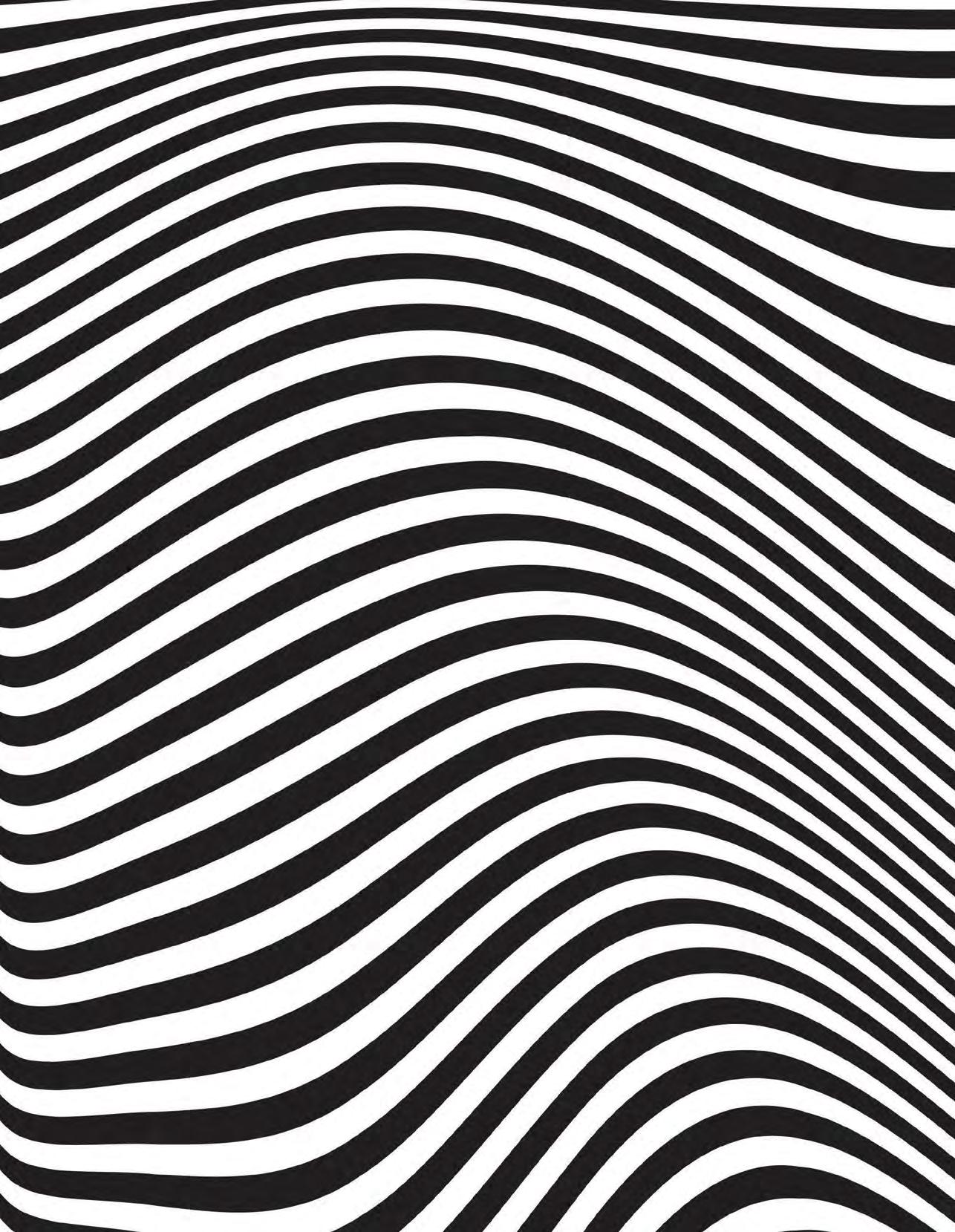
5.1
5.3
5.4
5.5
5.6
The role of the cerebral cortex in behaviour and mental processes 176 Chapter 4 Review 184 Chapter 5 Brain plasticity and brain injury ................................. 188
How the brain changes in response to experience and trauma 190 5.2 The biological impacts of an acquired brain injury................................................................. 198
The psychological impacts of an acquired brain injury 202
The social impacts of an acquired brain injury 206
Contemporary research into neurological disorders 208
Chronic t raumatic encephalopathy as an area of emerging research .............................. 213 Chapter 5 Review ................................................... 218 Unit 1 AOS 2 Checkpoint ................ 222 Chapter 6 Response to an investigation ..................................... 230 6.1 Scientific evidence 232 6.2 Analysis and evaluation of psychological research 239 6.3 Scientific communication 241 Chapter 6 Review 245 Unit 1 AOS 3 Sample response ..... 246 Unit 1 Review 248
HOW DO INTERNAL AND EXTERNAL FACTORS INFLUENCE BEHAVIOUR AND MENTAL PROCESSES? ..... 262 Chapter 7 Social cognition ........... 264 7.1 Person perception, attributions, attitudes and stereotypes ................................... 266 7.2 Avoiding cognitive dissonance with cognitive biases 274 7.3 The influence of heuristics on decision - making and problem-solving 279 7.4 The influence of prejudice and discrimination on mental wellbeing 283 Chapter 7 Review 292 Chapter 8 Factors that influence individual and group behaviour 296 8.1 The influence of social groups and culture on individual behaviour 298 8.2 The influence of obedience on individual behaviour 309 8.3 The influence of conformity on individual behaviour ................................................ 316 8.4 The influence of media on individual and group behaviour 322 8.5 Empowering individual decision-making through anticonformity and independence 328 Chapter 8 Review 332 Unit 2 AOS 1 Checkpoint 336 Chapter 9 Perception .................... 342 9.1 The role of attention in making sense of the world .............................................................. 344 9.2 The role of perception in processing and interpreting sensory information 349 9.3 The influence of biological, psychological and social factors on visual perception 356 OXFORD UNIVERSITY PRESS iv PSYCHOLOGY FOR VCE UNITS 1 & 2 No part of this publication may be reproduced, stored in a retrieval system or transmitted in any form or by any means.
UNIT 2
DRAFT
9.4

10.3 Distortions of perception in
11.1
3.1A Classification and identification: How can we categorise typical and atypical behaviour? 476
3.1B Correlational study: Is there a relationship between the number of atypical behaviours exhibited daily and perceived mental wellbeing?
4.4A
DRAFT
4.4B Case study: How can damage to the frontal lobe impact our experience of emotion? ............................................................... 480
5.1 Literature review: What strategies are effective in maximising brain plasticity and function? 482
5.6 Product, process or system development: How can we minimise head injuries in contact sports? ....................................................... 483
7.1 Controlled experiment: How does age affect person perception? 484
8.4A Correlational study: Is there a relationship between time spent on social media and perceived social connectedness? ...................... 486
8.4B Case s tudy: How can advertising affect our individual behaviour? 487
9.1 Fieldwork: Have you been paying attention? 488
9.2 Controlled experiment: How does perceptual set affect your perception of rat-man? 489
9.3 Simulation: What does the world look like with red–green colour vision deficiency? 491
10.2 Controlled experiment: Does perceptual set influence our judgment of flavours?........... 494
10.3 Literature review: How can a non-synaesthete acquire synaesthesia? 496
2.2 Product, process or system development: How can we promote mental
2.4 Controlled experiment: How can we assess conservation as part of cognitive development?
369 Chapter 9 Review 378 Chapter 10
of perception ......................................... 382
The influence of biological, psychological and social factors on gustatory perception
Distortions
fallibility
384
391
individuals .................................................. 397 Chapter 10 Review 404 Unit 2 AOS 2 Checkpoint ................ 408 Chapter 11 Student-designed investigation 416
10.1 The
of visual perception systems
10.2 The fallibility of gustatory perception
healthy
Investigation design 418 11.2 Scientific evidence ....................................... 429 11.3 Scientific communication ........................... 436 Chapter 11 Review 440 Unit 2 AOS 3 Sample poster .......... 442 Unit 2 Review 444 Units 1 & 2 Practice exam 458 Chapter 12 Investigations ............ 470
472
wellbeing with mobile apps?
474
...............................
478
of
brain? 479
Modelling: How can we model the structure
the
Glossary 497 References 508 Ack nowledgements 512 Index 514 OXFORD UNIVERSITY PRESS CONTENTS v No part of this publication may be reproduced, stored in a retrieval system or transmitted in any form or by any means.
Using Psychology for VCE Units 1 & 2
Key features of the Student Book
Chapter opener
Each chapter begins with a chapter opener that includes:
•Key Knowledge from the Study Design
•a groundwork quiz to test and support students’ prior knowledge
•a list of investigations to support key concepts.
Topic-based approach
Content is structured in clear topics with key ideas signposted at the beginning.
Study tips
Practical tips support student success in internal assessments and exams.
Real-world psychology
Real-life engaging examples that provide opportunities to apply key knowledge.
» This Student Book combines complete coverage of the VCAA Psychology Study Design 2023–2027 with clear and engaging design.
» Each pri nt Student Book comes with complete access to all the digital resources available on Student obook pro.



DRAFT
Margin glossary Literacy support is provided for key terms in the chapter with clear and concise definitions.
Skill drills
Students can practise their key science skills in context.
Worked examples
Detailed worked examples take students through how to solve different problems.




Check your learning Activity boxes with questions and tasks organised using cognitive verbs according to Bloom's taxonomy.
The role of the brain in mental processes and behaviour 4 CONCEPT MAP CHAPTER GROUNDWORK This chapter will build on concepts you may have come across in Year 10. Before starting the chapter, check how well you know the basics by completing this groundwork quiz. KEY KNOWLEDGE different approaches over time in understanding the role of the brain in behaviour and mental processes the roles of the hindbrain, midbrain and forebrain, including the cerebral cortex, in behaviour and mental processes. Source: VCE Psychology Study Design (2023–2027) reproduced by permission © VCAA 4.4A INVESTIGATION MODELLING How can model the structure of the Page 479 4.4B INVESTIGATION CASE STUDY How can damage to the frontal lobe impact our experience of emotion? Page 480 INVESTIGATIONS The role of the brain in mental processes and behaviour 4.1 Early approaches to understanding the role of the brain approaches to understanding the role of the brain the hindbrain, midbrain forebrain in behaviour mental processes the brain Forebrain 4.4 The role cortex in behaviour mental processes Cerebral cortex Role cerebral cortex Cortical Association Hemispheric specialisation Cerebral hemispheres Brain research methods Case studies Autopsies Surgical and non-surgical operations Historical approaches Trephination The brain-versusheart The mind-body problem Phrenology Groundwork quiz Chapter 4 158 PSYCHOLOGY FOR VCE UNITS & 2 OXFORD UNIVERSITY OXFORD UNIVERSITY UNIT HOW ARE BEHAVIOUR MENTAL PROCESSES SHAPED? 159 FIGURE A diffusion spectral imaging (DS) scan of white matter nerve fibres in the brain
Have you ever wondered why some people cry more than others? Or why some people seem able to keep calm no matter how frustrating a situation may appear? The study of emotional development explores how we learn emotions and how to deal with them over our lifespan. Emotions are mental states that occur in response to people, objects or experiences. Emotions can be pleasant, such as joy, love and excitement, or unpleasant, such as sadness, anxiety and anger. All emotions are integral to our psychological experience as they are essential for developing and maintaining relationships that bring meaning to our lives. Emotions also provide a lens for decision-making and reflection. In this chapter we will consider two theories of emotional development – one proposed by Harry Harlow and the other by Mary Ainsworth. Both theories explore the concept of attachment which refers to the emotional bond formed between an infant and a caregiver. Harlow’s theory of attachment Harlow’s (1958) research into attachment was conducted on rhesus monkeys. He separated some monkeys from their mothers at birth in an attempt to raise them in a germ-free environment and avoid illness. Through this he discovered something – while the monkeys did not get sick, they were unable to form relationships with other monkeys once they had grown up. He also found that the monkeys became upset if he removed a blanket from their cages that they had become used to, suggesting they had formed an attachment of some sort to the blanket. Based on these observations, Harlow extended his research. Harlow separated rhesus monkeys from their mothers immediately after birth and conducted two experiments. First, he placed the infant rhesus monkeys in an environment with two “surrogate mothers”. One of the surrogate mothers consisted of wire frame that had a baby bottle attached to it, while the other surrogate was made of soft cloth without a feeding bottle attached to it (see Figure 1). The second experiment that Harlow conducted involved dividing rhesus monkeys into two groups and giving each group access to either the wire surrogate mother or the cloth surrogate mother only, for a period of six months. 2.3 Emotional development over the lifespan KEY IDEAS ✚ Attachment refers to the emotional bond between an infant and caregiver. The degree and style of attachment formed depends on a range of factors. ✚ Harry Harlow found that contact comfort was more likely to lead to attachment between an infant and caregiver than provision of sustenance. ✚ Mary Ainsworth found that attachment formed during infancy (specifically the first 12 months of life) affects an individual's emotional development throughout the lifespan. emotion physical or psychological change that influences your response to a feeling or situation Harlow’s key findings Through his research Harlow found that: • when the rhesus monkeys had access to both mothers, they would only spend time with the wire mother when nourishment was required. After feeding, they would go back and spend most of their time with the cloth mother. • the infant monkeys placed with only the cloth mother spent more time with their surrogate mother than the monkeys placed with the wire mother, even though the wire mother provided them with food and the cloth one did not • when frightened with teddy bear, the infant monkeys with access to the cloth mother sought comfort from the surrogate mother, while the monkeys with the wire mother did not seek contact comfort from their surrogate (see Figure 2) • when extra features were added to the cloth mother, such as the ability to rock and feed the infant monkeys, the infant monkeys developed an even stronger attachment to the surrogate mother • infant monkeys raised by the wire surrogate mother developed atypically, struggling to socialise with other monkeys when grown. Practical implications of Harlow’s research Harlow’s research provided a lot of information on attachment and emotional development. It showed that contact comfort which was provided by being in proximity to the soft, cloth mother, is more important for forming attachment than food or nourishment. Harlow’s findings provided a good foundation for further research into the concept of attachment. Criticisms of Harlow’s research While Harlow’s findings provided a new insight into the concept of attachment, his research did not go without criticism. Two key criticisms of Harlow’s research are that: • the research was conducted on rhesus monkeys and therefore may not generalise to human beings • some investigations that Harlow conducted on rhesus monkeys in the 1950s would not be considered ethical by modern research ethics standards. This is explored further in Skill drill 2.3. When frightened with a teddy, the monkeys reared by the cloth surrogate ran towards their source of comfort. Monkeys raised by the wire from their own surrogate. attachment the emotional bond formed between an infant and a caregiver contact comfort the positive experienced by FIGURE 1 Despite the wire surrogate mother (left) having a feeding bottle attached, the rhesus monkeys showed a marked preference for the cloth surrogate (right), which provided a source of contact comfort and warmth. Evaluating ethics in Harlow’s research Key science skill: Comply with safety and ethical guidelines While Harlow’s research was conducted on monkeys, ethical considerations still apply. The VCE Study Design for Psychology states that students must be able to “consider the implications of their own and others’ investigations of living things” (VCAA, 2022). As you learnt in Topic 1.4, the five ethical concepts are beneficence, integrity, justice, non-maleficence and respect. Practise your skills 1 Explain the concept of “beneficence”, using Harlow’s research as an example. 2 Discuss why Harlow’s research might not be considered ethical by today’s standards, referring to one or more ethical concepts in your response. Need help complying with safety and ethical guidelines? See Topic 1.4 (page XX). 2.3 SKILL DRILL Study tip Biological and psychological factors are also known as factors, because they originate within the individual. Social factors are also called external factors because they originate from outside the OXFORD UNIVERSITY PRESS CHAPTER 2 THE COMPLEXITY OF PSYCHOLOGICAL DEVELOPMENT 89 OXFORD UNIVERSITY PRESS 88 PSYCHOLOGY FOR VCE UNITS 1 & 2 OXFORD UNIVERSITY PRESS vi PSYCHOLOGY FOR VCE UNITS 1 & 2
10.3 REAL-WORLD PSYCHOLOGY Alan Burgess and spatial neglect On 5 November 2007, Alan Burgess suffered a stroke that damaged the parietal lobe on the right side of his brain. Burgess, a tool design drafter and driver who was 59 at the time, was left with spatial neglect following the stroke. Due to this damage, Alan was no longer able to work and was forced into an early retirement. When drawing artwork Alan would provide detailed pictures of animals that missed elements and features on their left side. Following his stroke, the severity of Alan’s neglect was tested by neurologist. The neurologist asked Alan to mark the centre point of a 25-centimetre line on a piece of paper. In his first attempt Alan marked the line approximately centimetres from the right edge, completely ignoring the left side of the line. Alan has responded well to rehabilitation; on later attempts Alan would mark the centre of the line ten centimetres from the right edge. Apply your understanding 1 Identify which type of spatial neglect Alan is experiencing. Justify your answer. 2 Describe how development of spatial neglect has affected Alan’s day-to-day life. 3 Draw an example of how you would expect Alan to copy the image of the beach chairs. 10.3 WORKED EXAMPLE Presenting ideas using visual representations Create a Venn diagram to showcase the similarities and differences between grapheme–colour synaesthesia and lexical–gustatory synaesthesia. (4 marks) Think Do Step 1: Identify the similarities between the two forms of synaesthesia. Similarities: Both conditions are forms of synesthesia. Both conditions involve association with words letters. Step 2: Identify what is unique to each form of synaesthesia. Grapheme–colour synaesthesia involves an association with colour. Lexical–gustatory synaesthesia involves an association with taste. Step 3: Draw your Venn diagram and place the similarities in the intersection, and differences in the ends of the circles. (1 mark each) Form synaesthesia association with words letters Involves association with colour Involves an association taste Grapheme–colour synaesthesia Lexical–gustatory synaesthesia Describe and explain 1 Describe what occurs in a synaesthete brain when one sense is activated. 2 Explain why synaesthesia is thought to occur. 3 Describe why spatial neglect patient might experience difficulty when eating meal. 4 Identify which specific type of synaesthesia the following people experience: Vincent van Gogh b James Wannerton Kaitlyn Hova. Apply, analyse and compare 5 Compare grapheme–colour synaesthesia with chromaesthesia. Design and discuss 6 Draw a simple diagram of a house as would be drawn by left-sided spatial neglect patient. 7 Create a Venn diagram to showcase the similarities and differences between synaesthesia and spatial neglect. 8 Discuss why damage to the left parietal lobe is less likely to result in spatial neglect than damage to the right parietal lobe. 10.3 CHECK YOUR LEARNING FIGURE An image of beach chairs OXFORD PRESS PRESS 402 PSYCHOLOGY FOR VCE UNITS CHAPTER 10 DISTORTIONS OF PERCEPTION 403
No part of this publication may be reproduced, stored in a retrieval system or transmitted in any form or by any means.
Practice assessments
Four practice assessments to familiarise students with the internal assessments.


DRAFT
Exam essentials
Provides tips and strategies for maximising marks on exam responses.
Practice exam questions
Exam-style questions for students to practise writing responses; includes question sets for Unit 1, Unit 2 and combined Units 1 & 2.
Use the following information to answer questions 1 and 2. Kurt has been employed as an accountant at a large firm for the past three years. A promotion became available in the firm and Kurt applied for it. Kurt’s boss awarded the promotion to Sabina, who, unknown to Kurt, had more qualifications and relevant experience. Question 1 Which of the following attributions to explain Kurt’s interpretation of his boss’ decision to promote Sabina is plausible? A Kurt holds the external attribution that his boss’ decision is due to his boss’ poor decision-making. B Kurt holds the external attribution that he is a better-suited candidate for the promotion as he feels he works harder than Sabina. C Kurt holds the internal attribution that his boss’ decision is out of the ordinary and probably due to something adverse that his boss recently experienced. D Kurt holds the internal attribution that during the interview, his boss was distracted and was not paying enough attention to Kurt’s responses. Question 2 Prior to Sabina’s promotion, Kurt perceived that Sabina and he were very similar. Kurt originally thought that both he and Sabina shared many of the same skills and abilities and produced a similar quality of work. Kurt’s person perception of Sabina prior to her promotion can be explained through: A Kurt’s evaluation of physical cues surrounding Sabina. B Kurt’s reference to self-schema in his evaluation of Sabina. C Kurt’s attention to saliency detection surrounding Sabina’s skills, abilities and knowledge. D Kurt’s social categorisation of Sabina. Question 3 Stereotyping can best be explained as an: A oversimplified collection of beliefs and situational attributions towards a certain person, group, culture or subculture. B oversimplified collection of beliefs and personal attributions towards a certain person, group, culture or subculture. C oversimplified collection of attitudes towards a certain person, group, culture or subculture. D oversimplified collection of cognitions towards a certain person, group, culture or subculture. Question 4 Veronika is invited by her friend to go to a cocktail party. When Veronika’s friend explains that the party is celebrating the end of financial year for a successful and wealthy business firm, Veronika immediately feels unsure about attending as she thinks she might be judged by others at the party for not being wealthy. Due to this, Veronika tells her friend that she cannot attend. Which heuristic is Veronika basing her decisionmaking upon? A The self-serving heuristic B The representative heuristic C The availability heuristic D The affect heuristic Question 5 Hank, 19, is part of a friendship group where some members occasionally binge drink alcohol, a behaviour that never really appealed to Hank. At a party one evening, Hank is encouraged to quickly drink many shots of a strong spirit. Hank considers consuming the shots as most of his friends have done so and appear to be having fun. Instead, Hank declines and leaves the party. Hank’s decision-making and actions can best be described as: A a position of dissent against the friendship group. B a position of anticonformity against the friendship group. C a position of independence without regard to the majority of the group. D a position of counter conformity against the majority of the group. Question 6 Angie is getting ready for a costume party at her house with some friends. Angie originally planned to go dressed as Shrek. When she sees all her friends dressing as superheroes, Angie raids her closet for an outfit and cape that resembles Wonder Woman so she can fit in with her friends. Which of the following best describes the factor that has influenced Angie to conform? A Normative influence B Informational influence C Group size D Deindividuation Use the following information to answer questions 7 to 11. A research psychologist investigated the effect of sleep deprivation on attention levels. As part of the study, participants were required to complete a reaction time test, with a stopwatch used to time each participant. After analysing the results, the psychologist reported that the standard deviation for the sleep-deprived condition was higher than the standard deviation for the not sleep-deprived condition. Question 7 Which of the following is a possible hypothesis for this experiment? A Participants who are sleep deprived will experience changes in their attention levels compared to those who are not sleep deprived. B Participants who are sleep deprived will display lower attention levels compared to those who are not sleep deprived. C Sleep deprivation will have no impact on attention levels. D Attention levels will be higher for individuals who are not sleep deprived. Question 8 During the data collection phase of the research, the psychologist noticed that it was difficult to determine the reaction time of each participant as there was variation in the speed in which the stop and start buttons were pressed. Which type of error is this an example of? A Random error B Systematic error C Personal error D Bias Section A – Multiple choice This practice exam is designed to help you revise your understanding of all the key concepts covered in Units 1 and 2 and practise your skills on a range of exam-style questions. You can download a printable version of the exam using the hotspot below. Practice examination Section Number of questions Number of questions to be answered Number of marks A 40 40 40 B 9 9 80 Total 49 49 120 UNITS 1&2 Practice exam OXFORD UNIVERSITY PRESS OXFORD UNIVERSITY PRESS 458 PSYCHOLOGY FOR VCE UNITS 1 & 2 UNITS 1 & 2 PRACTICE EXAM 459 OXFORD UNIVERSITY PRESS OXFORD UNIVERSITY PRESS 446 PSYCHOLOGY FOR VCE UNITS 1 & 2 Key knowledge Test yourself Rate yourself Target your revision the development of independence and anticonformity to empower individual decision-making when in groups 8 Distinguish between the terms independence and anticonformity. □ High – I’ve got this! □ Medium – I could use a bit more practice. □ Low – have some work to do! Topic 8.5 Pages 328–331 the role of attention (sustained, divided, selective) in making sense of the world around us 9 Provide two examples of controlled processes and two examples of automatic processes. □ High – I’ve got this! □ Medium – I could use a bit more practice. □ Low – I have some work to do! Topic 9.1 Pages 344–348 the role of perception in the processing and interpretation of sensory information, as demonstrated through top-down and bottom-up processing 10 Provide an example of bottom-up processing. □ High – I’ve got this! □ Medium – could use a bit more practice. □ Low – have some work to do! Topic 9.2 Pages 349–355 the influence of biological, psychological and social factors on visual perception and gustatory perception 11 Identify two psychological factors that influence: a visual perception b gustatory perception □ High – I’ve got this! □ Medium – could use a bit more practice. □ Low – have some work to do! Topics 9.3 and 9.4 Pages 356– 358 and 369–377 the fallibility of visual perceptual systems, for example, visual illusions and agnosia 12 Explain how a person with prosopagnosia has different perception from what is considered “normal” perception. □ High – I’ve got this! □ Medium – I could use a bit more practice. □ Low – have some work to do! Topic 10.1 Pages 384–390 the fallibility of gustatory perception, for example, supertasters, exposure to miraculin and the judgment of flavours 13 Describe how miraculin can alter person’s perception of sour-tasting food. □ High – I’ve got this! □ Medium – I could use a bit more practice. □ Low – have some work to do! Topic 10.2 Pages 391–396 • distortions of perception of taste and vision in healthy individuals, such as synaesthesia and spatial neglect 14 Identify which area of the brain is most likely to result in left-sided spatial neglect when injured. □ High – I’ve got this! □ Medium – could use a bit more practice. □ Low – I have some work to do! Topic 10.3 Pages 397–403 See it in action Read the exam question below and see how the tip has made a difference in the high-scoring and low-scoring responses. QUESTION 1 (2 marks) Name the pictorial cue principle that describes how objects that are closer overlap objects that are further away and explain how this pictorial cue is used in Figure 1. Part B – Exam essentials Now that you have completed Part A, it is time to learn and practise some of the skills you will need to answer exam questions like a pro! Our expert authors have created the following advice and tips to help you maximise your results on any end-of-unit examinations. Exam tip 1 – Use the mark allocation as a guide • Every exam question is allocated a certain number of marks. You can use these marks to work out how much information you need to provide in your response. • Do not just write down everything you know about a topic to answer a question; sometimes even a single word or few words is enough to answer a question. For example, a one-mark “State the name of ...” question would require you to write less information than a four-mark “Discuss the value of ...” question. A good rule of thumb to follow is one mark = one piece of information. Using the mark allocation as a guide can help you structure your responses and even save you time. FIGURE 1 Which pictorial cue would you use to explain why closer objects overlap objects that are further away? Response 1 (high-scoring) Interposition/overlap. This pictorial cue is used in the image to show us that the blue ball is closer to us than the dog because the blue ball overlaps the dog. One mark awarded for one piece of information; clearly and succinctly addresses first part of question. One mark awarded for correct explanation of how interposition/overlap is used in image. Response 2 low-scoring) The pictorial cue principle described is interposition/overlap. Interposition/overlap can help determine if objects are closer to us or further away. You can observe the pictorial cue of interposition in the photo of the dog on the lawn with the ball. One mark awarded for correct pictorial cue but excess detail was not required. Student could have saved time if they just stated the name of the pictorial cue. Student has written two lines of information but has not been awarded the second mark. This is because the student has not correctly explained how interposition/overlap is used in the photo. TABLE 1 continued UNIT 2 REVIEW 447 Sample Assessment 2 The following excerpt has been adapted from the original. Read through the excerpt and answer the questions. Players who retired from concussion excluded from landmark AFL study By Wendy Carlisle 29 April 2022 [F]ormer AFL players Dean Kemp (retired 2001) and Chad Rintoul (retired 2002) were two of 61 concussion cases claimed to have been dumped from a 2009 study by Dr Michael Makdissi, who is now the AFL’s chief medical officer. Despite this, the study was used by the league at the time to justify its concussion policy of returning players to the field based on individual clinical assessment. But three academics have raised concerns about the study because of the sheer number of concussions excluded, and because the study did not examine the long-term effects of the players’ injuries. Makdissi's study followed all players in the 2000–03 seasons, counting 199 concussions in 157 players. The study was published in the peer-reviewed American Journal of Sports Medicine produced by the American Orthopedic Society for Sports Medicine … Of the 138 concussions analysed, 127 (92 per cent) did not miss a game and the remaining 11 concussed players missed one game. The study is up-front in stating it “did not address the issue of long-term outcomes following concussive injury.” Using cognitive and injury data, the former Hawthorn club doctor concluded players were “safely and appropriately” returned to the game under the AFL’s concussion protocols of that time. He also reported players were returned to play with “no persistent deficits in cognitive function”. The study excluded concussed players if they returned to a lower grade, had concurrent injuries, or had not played a game before their concussive injury. Others were excluded if they were concussed in their final or first games of the season because this meant player performance before and after concussion could not be measured. Makdissi’s study concluded that player performance, measured by disposals [number of times players touched the ball], was not significantly affected by concussion. Kemp and Rintoul were excluded because they did not play after their concussions, triggering the “inadequate follow-up” clause. … [A] second set of cognitive tests for Makdissi’s thesis, which related to 16 of the 138 concussions, found deficits in reaction times, attention and working memory in concussed players who were returned to play, but these results were not published in the study. Professor Evelyne de Leeuw, a public health expert from the University of NSW, claimed the retirements of Kemp and Rintoul ought to have been the “crux” of the paper as it purported to be about the safe return of players to competition after concussion. De Leeuw suggested the study ought to have followed players for a longer time because concussion has long-term effects and it “didn’t go there”. She questioned how the study could conclude concussed players were being safely returned to play when the effects of concussion were known to evolve over the long term. “What they say is if someone gets concussion, they are allowed to come back on. It’s safe to come back to the sport for one game but doesn’t look beyond that. The conclusion [that players are being safely returned to play] is not warranted,” she claimed. Other players concussed during the study period … were also excluded. All later retired due to, or partly because of, repeated concussions. Makdissi’s study reported that one player retired because of “persistent headaches”, and the player had been excluded because of “insufficient baseline”, meaning they had not played before their concussion. It raises the possibility that another unidentified player retired from concussion during the period of the study. Dr Franco Impellizzeri, an expert in sports medicine at the University of Technology in Sydney, claimed this potentially raised the issue of “selective reporting”. “Considering the clinical relevance of the issue, before saying something is safe, more caution is needed,” Impellizzeri said. Rintoul told The Age he spent months in bed after his concussions, experiencing migraines, dizziness, nausea, and depression. In 2001, Kemp could only finish two of the eight games he started after three concussions. Both [Kemp and Rintoul] were cleared to return to competition under the league’s concussion protocols, which were the subject of the study. … Kemp, who experienced numbness in his fingers, was told he risked permanent memory loss and blindness if he kept playing. Rintoul retired in 2002 after back-to-back concussions in rounds two and three. Recalling the debate around concussion at the time of his retirement, Rintoul said: “People fobbed it [concussion] off for other symptoms like migraine. I saw everyone from neurologists to doctors to chiropractors, everyone, to try and work out what I could do to help me out, but I got not too many answers. “I was working out that the more concussions you get the easier it is to get a concussion and the worse the effects are. So, it’s like a big snowball.” Last year, after former Richmond player Shane Tuck was posthumously diagnosed with chronic traumatic encephalopathy (CTE) by researchers at the Australian Sports Brain Bank, the AFL radically altered its approach to concussion management, introducing mandatory 12-day stand-downs for concussed players … At the time of Tuck’s CTE diagnosis, the safety of the AFL’s concussion protocols was under increased scrutiny from independent experts including the Australian Sports Brain Bank’s Victorian director, Associate Professor Allan Pearce, who argued evidence showed players needed 30 days to recover from a concussion. After the AFL announced that it was doubling the mandatory time out for a concussed player from six to 12 days, the NRL followed suit with an 11-day stand-down. Neither code has provided scientific evidence to support their claim that these stand-downs are safe. Before this, 80 per cent of concussed players were returned to competition the following week, according to calculations from statistics published in the AFL’s injury reports. Rintoul urged the AFL to do more research into the long-term effects of concussion and to follow up on players like him. Source: The Age FIGURE 2 Chad Rintoul OXFORD UNIVERSITY PRESS UNIVERSITY 224 PSYCHOLOGY FOR VCE UNITS 1 & 2 UNIT 1 AREA OF STUDY 2 CHECKPOINT 225
OXFORD UNIVERSITY PRESS
USING PSYCHOLOGY FOR VCE UNITS 1 & 2 vii
No part of this publication may be reproduced, stored in a retrieval system or transmitted in any form or by any means.
Investigations
Each chapter contains a range of investigations that cover all eight scientific investigation methodologies. Investigations are available in the Student Book and via your obook pro.

Chapter reviews
Each chapter review includes:
• a summa ry of key learning in each chapter
• revision questions written to target assessment through multiple choice and short answer questions
• digit al links to your obook pro at the point of learning.
DRAFT
Checkpoints
Practice assessments and exam-style revision questions for each Area of Study, including multiple choice and short answer questions.

OXFORD UNIVERSITY PRESS viii PSYCHOLOGY FOR VCE UNITS 1 & 2 8 CHAPTER Members of social groups can have varying levels of status and power, both of which can influence individual behaviour and group behaviour. • Groupthink and group shift are two phenomena that can influence decision-making in groups. • Cultural norms can both encourage and discourage us to behave and think in certain ways. • The Stanford prison experiment highlighted the effect of status and power on individual behaviour and group dynamics. • Individuals’ decision-making and behaviour can be directly affected by obedience to authority figures. Obedience occurs when a person in a lower position in a hierarchal social relationship follows the commands of those in a higher social position. • The extent to which obedience may affect individual behaviour was highlighted in Milgram’s studies into obedience. • Proximity, legitimacy of the authority figure and group pressure are three factors that affect the likelihood of someone displaying obedience. • Conformity refers to the act of changing one’s behaviour to match the responses or expectations of others. Asch’s studies highlighted how different social factors influence conformity. • Factors that influence conformity include normative influence, informational influence, culture, group size, unanimity, deindividuation and social loafing. • Our engagement with media such as social media and video games can have positive and negative influences on our individual and group behaviour. Social media can influence social connectedness, information access and social comparisons. • Video games can influence social connectedness and addictive behaviours. Anticonformity is directly opposing or challenging the majority. • Independence is the ability to resist the majority. • Anticonformity and independence help contribute to diverse thinking, and better problem-solving and decision-making in groups. Review Chapter summary 8.1 8.2 8.3 8.4 8.5 Revision questions Multiple choice 1 The ability to give negative consequences or remove positive consequences is known as: A legitimate power. B coercive power. C informational power. D reward power. 2 A person buying their first car is more likely to conform to the advice given to them from their mechanic friend due to: A normative influence. B group size. C informational influence. D unanimity. 3 One inference that can be made from Zimbardo’s Stanford prison experiment is that: A the type of role expectation that is not assigned to a person will influence their behaviours towards others. B the type of role expectation that is given to an individual will have minimal effect on their behaviour towards others. C roles and role expectations that are assigned to a person will have a direct influence on their power over others. D power that is assigned to a person will have a direct influence on their roles and role expectations. 4 In the Stanford experiment the guards wore military uniform and dark glasses and carried batons. What was the purpose of this? A Depersonalisation B Deindividuation C Detachment D Desensitisation Use the following information to answer questions 5 and 6. Avi’s basketball team is one point down with possession of the ball in the last time-out in a game. In the group huddle, the team captain, Craig, suggests that they use a specific combination of passes to lead up to taking a shot from the three-point line. Everybody in the team agrees with this except Avi. Avi does not think it is a good idea as the team’s accuracy at shooting three-pointers is poor. Avi thinks they would have a better chance of winning by taking a shot closer to the ring. When Avi sees everyone else agree with Craig, he keeps quiet about his opinion. 5 Avi’s choice to keep his opinion to himself is an example of: A obedience. B conformity. C culture. D social norms. 6 Avi voicing his opinion to the team would be an example of: A dissent. B anticonformity. C independence. D rebellion. 7 Which of the following best describes the concept of social connectedness? A The sense of belonging that comes from membership of groups and relationships B The number of social connections we have C The quality of interaction that is engaged in with others both close and far in proximity D The degree of conformity we display in group settings to attain close social connections OXFORD UNIVERSITY PRESS OXFORD UNIVERSITY PRESS 332 PSYCHOLOGY FOR VCE UNITS 1 & 2 CHAPTER 8 FACTORS THAT INFLUENCE INDIVIDUAL AND GROUP BEHAVIOUR 333
AREA OF STUDY 2 UNIT Checkpoint 1 In Unit 1 Area of Study 2, you will be required to complete one task from the following options: • analysis and evaluation of an experiment or case study • a data analysis of generated primary and/or collated secondary data reflective annotations of a logbook of practical activities • media analysis of one or more contemporary media texts a literature review response to a psychological issue or ethical dilemma a modelling or simulation activity problem-solving involving psychological concepts, skills and/or issues • a report of a scientific investigation, including the generation, analysis and evaluation of primary data. Source: VCE Psychology Study Design (2023–2027) reproduced by permission © VCAA The assessment support provided in this section models one way of approaching the following task for Outcome 2: response to a psychological issue or ethical dilemma. Important notice to students Your teacher may select one of the other task options above for you to complete as assessment for this Outcome. If so, refer to the table of contents to find the assessment support related to that task. The advice, sample assessment and sample response provided should be used as an example and should not be completed as part of your formal assessment. Instead, your teacher will create a new task for your class to complete. Unless specifically credited, the VCAA has not written this material and does not endorse the content. Overview of Assessment 2 – Response to a psychological issue In this sample assessment for Unit 1 Area of Study 2, you will be required to respond to a psychological issue. This task is designed to assess your understanding of different structures of the brain and their respective functions. It will also assess your understanding of the impact of acquired brain injury, research into neurological disorders and the brain’s capacity to change in response to brain trauma. Part A – Assessment support for Unit 1 Area of Study 2 A step-by-step guide to completing Assessment 2 The information provided in this section is designed to help you prepare and practise for Assessment 2. The tips and advice included are broad and should help you successfully complete a response to a psychological issue, regardless of the specific requirements of the task your teacher or school has created. Step 1: Carefully read the requirements of the task and understand how you will be assessed The best way to set yourself up for success on Assessment 2 is to complete the Chapter review questions for Chapters 4 and 5. Be sure to read through and complete any Real-world psychology sections from these chapters to practise your comprehension and writing skills in response to a scenario. Step 2: Justify your diagnoses with evidence Ensure that you justify any diagnosis in psychology with evidence. In this area of study, you explored neurological disorders and their associated symptoms and behaviours. It is important that you link your diagnosis with the symptoms and behaviours discussed in the scenario. Step 3: Discuss the impacts of brain damage associated with specific areas of the brain Brain function and brain trauma were also explored in this area of study. With this knowledge you may be expected to predict specific impacts associated with damage to the brain. When answering questions related to a scenario where someone has sustained brain damage, be sure that you can reference what changes or impacts could occur as a result of this brain damage. Step 4: Be specific when discussing areas of the cerebral cortex When referencing a lobe within the cerebral cortex always try to be as specific as possible. For example, if you are answering a question about processing vision, it is important to not only reference the occipital lobe but also make links to the primary visual cortex located within the occipital lobe. Now that you have learned about some of the key steps to follow to achieve success on Assessment 2, it is a good time to practise putting this theory into action Primary visual cortex Occipital lobe (vision) FIGURE 1 Make sure to link processes with the correctly sections of the brain. OXFORD UNIVERSITY PRESS OXFORD UNIVERSITY PRESS 222 PSYCHOLOGY FOR VCE UNITS 1 & 2 UNIT 1 AREA OF STUDY 2 CHECKPOINT 223 Investigations To complete VCE Psychology, you will need to complete at least 10 hours of practical work for each of Units 1 and 2. Practical work can cover a range of scientific investigation methodologies, such as controlled experiments, modelling, case studies, classification and identification, literature reviews, fieldwork, simulations, correlational studies and product, process or system development. All investigations that are undertaken as part of your course, as well as internal assessments, should be written in a logbook that will be monitored and submitted to teachers. Before undertaking an investigation for the first time, ethical concerns should be considered, including the importance of sociocultural, economic, political and legal factors that may arise from science-related decision-making. 12 UNIT 1 INVESTIGATIONS 2.2 PRODUCT, PROCESS OR DEVELOPMENT How can we promote mental wellbeing with mobile apps? Page 472 2.4 CONTROLLED EXPERIMENT How can we assess conservation as part of cognitive development? Page 474 3.1A CLASSIFICATION AND IDENTIFICATION How can we categorise typical and atypical behaviour? Page 476 3.1B CORRELATIONAL STUDY Is there a relationship between the number of atypical behaviours exhibited daily and perceived mental wellbeing? Page 478 4.4A MODELLING How can we model the structure of the brain? Page 479 4.4B CASE STUDY How can damage to the frontal lobe impact our experience of emotion? Page 480 5.1 LITERATURE REVIEW What strategies are effective in maximising brain plasticity and function? Page 482 PRODUCT, PROCESS OR SYSTEM DEVELOPMENT How can we minimise head injuries in contact sports? Page 483 UNIT 2 INVESTIGATIONS 7.1 CONTROLLED EXPERIMENT How does age affect person perception? Page 484 8.4A CORRELATIONAL STUDY Is there a relationship between time spent on social media and perceived social connectedness? Page 486 8.4B CASE STUDY How can advertising affect our individual behaviour? Page 487 9.1 FIELDWORK Have you been paying attention? Page 488 9.2 CONTROLLED EXPERIMENT How does perceptual set affect your perception of rat-man? Page 489 9.3 SIMULATION What does the world look like with red–green colour vision deficiency? Page 491 10.2 CONTROLLED EXPERIMENT Does perceptual set influence our judgment of flavours? Page 494 LITERATURE REVIEW How can non-synaesthete acquire synaesthesia? Page 496 CHAPTER SAFETY IN THE LABORATORY This chapter will highlight key safety concerns for each investigation, though there are some general safety concerns to be considered before completing all practical work. → Do not eat or drink in the lab. → Always be aware of your peers and act in a way that will not cause harm. → Wear a lab coat, safety glasses, close-toed shoes and gloves when appropriate. → Review the school’s safety procedures and location of the eyewash, shower, spill kits and first-aid kits. → Handle all materials with care and consult your teacher and risk assessments for all hazards involved with each particular material used. Always check that electrical equipment is not damaged and that there are no exposed wires before use. → Fieldwork should be completed in groups, with a full risk assessment completed before any excursion. It is the responsibility of the teacher and school to conduct a risk assessment before any investigation covered in this book. FIGURE 1 Modelling is one type of scientific investigation methodology that you will come across throughout VCE Psychology. In the 4.4A Modelling investigation you will use materials such as plasticine to build model of the brain. OXFORD PRESS 470 PSYCHOLOGY FOR VCE UNITS 1 & 2 OXFORD UNIVERSITY PRESS UNIT 2 HOW DO INTERNAL AND EXTERNAL FACTORS INFLUENCE BEHAVIOUR AND MENTAL PROCESSES? 471
No part of this publication may be reproduced, stored in a retrieval system or transmitted in any form or by any means.
Student investigation chapters
Guidance for Unit 1 AOS 3
Response to an investigation and Unit

DRAFT
Sample investigations
Annotated examples of each AOS 3 investigation to support students create high quality assessments.
Unit reviews
At the end of each unit, students can:
• revisit and revise the content with questions mapped to each key knowledge dot point
• gain tips to succeed in exams and apply their skills in a Think like an examiner activity
• answe r practice exam questions.
Digital hotspots
Digital icons or hotspots found throughout the student book link to digital resources accessible via the obook pro.
Video – Watch a video to support understanding of key concepts.
Assessment – Access a digital quiz for the topic or chapter.
Resource – Access a worksheet or additional resource.
OXFORD UNIVERSITY PRESS USING PSYCHOLOGY FOR VCE UNITS 1 & 2 ix
6 GROUNDWORK This chapter will build on concepts you have learnt in Unit 1 and will allow you to practise skills from Chapter 1. Before starting the chapter, check how well you know the basics by completing this groundwork quiz. CHAPTER KEY KNOWLEDGE Scientific evidence → the distinction between primary and secondary data → the nature of evidence and information: distinction between opinion, anecdote and evidence, and between scientific and non-scientific ideas → the quality of evidence, including uncertainty, validity and authority of data and sources of possible errors or bias → methods of organising, analysing and evaluating secondary data → the use of a logbook to authenticate collated secondary data. Scientific communication → psychological concepts specific to the investigation: definitions of key terms; and use of appropriate psychological terminology, conventions and representations → the characteristics of effective science communication: accuracy of psychological information; clarity of explanation of scientific concepts, ideas and models; contextual clarity with reference to importance and implications of findings; conciseness and coherence; and appropriateness for purpose and audience → the use of data representations, models and theories in organising and explaining observed phenomena and psychological concepts, and their limitations → the influence of sociocultural, economic, legal and political factors, and application of ethical understanding to science as a human endeavour → conventions for referencing and acknowledging sources of information. Analysis and evaluation of psychological research → characteristics of repeatable and reproducible psychological research and the consideration of uncertainty → criteria used to evaluate the validity of psychological research. Source: VCE Psychology Study Design (2023–2027) reproduced by permission © VCAA Groundwork quiz Chapter 230 PSYCHOLOGY FOR VCE UNITS 1 & 2 OXFORD UNIVERSITY OXFORD UNIVERSITY FIGURE 1 To complete Unit 1 Area of Study 3, you will research and evaluate information from a range of sources including books, scientific journals and online materials. UNIT 1 HOW ARE BEHAVIOUR AND MENTAL PROCESSES SHAPED? 231 AREA OF STUDY 3 to investigate whether genetic data, combined with the data from the Danish health registry, could be used to predict the diagnosis and severity of mental disorders. The study was conducted from 1981 to 2016 and used a Danish population sample that consisted of individuals born between 1981 and 2005. This sample included individuals diagnosed with mental disorders such as ADHD, ASD, depression, bipolar disorder and schizophrenia. Participants’ genetic and registry data was analysed using the researchers’ AI deep learning model. Results found that the analysis could predict the diagnosis and severity of mental disorders with up to 81 per cent accuracy. Discussion Liu et al. found that their machine learning modelling system was able to predict diagnoses of mental disorders with up to 65 per cent accuracy. Therefore, results of this study refute the hypothesis that machine learning and AI data systems will not be able to accurately predict the diagnosis of mental disorders. Liu et al.’s study did, however, have limitations in the experimental design.The sample had a limited number of participants that were afflicted with more than one mental disorder. This means the modelling algorithm may not have had enough data available to refine how it diagnoses participants with more than one condition, reducing the accuracy of results. Additionally, since different mental disorders may share genetic risks, genomic information alone may not always be enough to provide an accurate diagnosis. Allesøe et al. (2023) found that their AI system could predict the diagnosis and severity of mental disorders with up to 81 per cent accuracy. Therefore, results of this study also refute the hypothesis that machine learning and AI data systems will not be able to accurately predict the diagnosis of mental disorders. The research in question did, however, have limitations in its design. Despite having a large sample size, the sample only included Danish citizens.Therefore, results may only be internally valid to the Danish population rather than other cultures where the type of data collected in national health registries can vary.The same investigation would need to be conducted in other countries or using more representative samples before results could be considered externally valid. Both Liu et al. and Allesøe et al. adhered to the ethical principle of non-maleficence by ensuring participants were all deidentified.The implications of accurately predicting mental health disorders using AI or machine learning could improve consistency and accuracy of mental disorder diagnosis globally, which would subsequently improve health outcomes for individuals afflicted with mental disorders. Conclusion The two studies suggest that machine learning and AI data systems can accurately predict the diagnosis of mental disorders to an extent. Both studies also suggest that AI or machine learning programs for diagnosis should be used to support rather than replace traditional clinical diagnosis from mental health professionals. References llesøe, R. L., Thompson, W. K., Bybjerg-Grauholm, J., Hougaard, D. M., Nordentoft, M., Werge, T., Rasmussen, S., & Benros, M. E. (2023). Deep learning for cross-diagnostic prediction of mental disorder diagnosis and prognosis using Danish nationwide register and genetic data. JAMA psychiatry 80(2), 146–155. doi: 10.1001/jamapsychiatry.2022.4076 Essex, M. J., Kraemer, H. C., Slattery, M. J., Burk, L. R., Thomas Boyce, W., Woodward, H. R., & Kupfer, D. J. (2009). Screening for childhood j.1469-7610.2008.02015.x Jessulat, P., Hong, L., Allen, J., Blaher-Lucas, E., Rock, M., Morey, K., & Edwards, R. (2024). Psychology forVCE Units 1&2 University Press. Liu,Y., Qu, H-Q., Mentch, F.D., Qu, J., Chang, X., Nguyen, X., Tain, L., Glessner, J., Sleiman, P.M.A., & Hakonarson, H. (2022). Application of deep learning algorithm on whole genome sequencing data uncovers structural variants associated with multiple mental disorders in African American patients. Molecular psychiatry (3), 1469–1478. doi: 10.1038/s41380-021-01418-1 countries). Child and adolescent psychiatry and mental health 1–11. doi: 10.1186/s13034-016-0140-5
Response to an investigation
Can machine learning and artificial intelligence models accurately predict the diagnosis of mental disorders? Introduction Mental disorders describe a range of conditions that affect a person’s emotions, cognitions and behaviours (Jessulat et al., 2024). Diagnosing mental disorders is an important role of both psychologists and psychiatrists, who use the criteria outlined in the DSM-5-TR to inform their diagnoses based on information disclosed to them by patients (Jessulat et al., 2024). Diagnosis of mental disorders can be challenging as patients might not always provide accurate information about themselves or may be affected by more than one type of disorder (Liu et al., 2022).Accurate and early detection of mental disorders gives mental health professionals and patients the best chance of managing and improving symptoms (Essex et al., 2009).Alternatively, misdiagnosis of mental disorders can hinder or delay successful outcomes for patients (Merten et al., 2017). Recent studies have tested whether machine learning or artificial intelligence (AI) based systems can use data to accurately predict whether a patient will be diagnosed with a mental disorder.These modelling systems conduct analytics on a combination of genetic, medical registry, patient questionnaire and neuroimaging data to make predictions about diagnoses (Liu et al., 2022;Allesøe et al., 2023). Since AI-predicted diagnoses stem from a computer system and are made without in-person patient interaction, they may be limited in their ability to gain access to data about social and environmental factors that could influence or be relevant to the diagnosis of specific disorders.This raises the question of whether machine learning and AI data systems can accurately predict whether an individual will be diagnosed with a mental disorder. It is hypothesised that machine learning and AI data systems will not be able to accurately predict the diagnosis of mental disorders. Scientific evidence/data Liu et al. conducted a modelling analysis on the genomic data of 4179 participants, 1384 of whom had been diagnosed with at least one of eight mental disorders. The aim of the investigation was to determine whether their model could differentiate between participants afflicted with a mental disorder from those unafflicted, and whether their model could predict the diagnosis of participants. Participants were aged between 0 and 21 years. Consent to use data was granted from patients over 18 years of age and parental consent granted for participants under 18. Participants’ genomic data was analysed by the researchers’ deep learning algorithm model to make diagnosis predictions. The first round of modelling accurately predicted 65 per cent of participant diagnoses. The second round of modelling accurately predicted 70 per cent of participant diagnoses in participants who had more than one mental disorder. Allesøe et al. conducted a longitudinal study using a modelling analysis on data from 63,535 participants belonging to the Danish Health registry.Allesøe et al. aimed UNIT You can use your textbook as a suitable reference. Your textbook needs to be correctly referenced. In your introduction, provide background context to help set the scene for exploring your question. Your research question should include sufficient detail. The question “Are machine learning and AI model diagnoses accurate?” would be too vague as it does not specify the type of diagnoses. Clearly identify the contemporary stimulus or issue that has inspired the research question. In-text referencing is not only necessary component of psychological research, but also suitable way to provide evidence to support your arguments or introduction. Each piece of research discussed includes a brief summary of the aim and hypothesis, methodology (research method used), participants, materials, procedure and results. Explains whether the results of each piece of research supported the hypothesis stated. Includes discussion of limitations. Evaluates the evidence including discussion of potential limitations and/or biases, samples used, repeatability, reproducibility and validity. Addresses original research question. Implications of findings are discussed. All in-text references must be included in your reference list. Make sure you use your chosen referencing style consistently. Ordering your references alphabetically is helpful way to avoid leaving out an in-text reference. OXFORD UNIVERSITY PRESS OXFORD UNIVERSITY PRESS 246 PSYCHOLOGY FOR VCE UNITS 1 & 2 UNIT 1 AREA OF STUDY 3 SAMPLE RESPONSE 247
Sample response 1
2 AOS 3 Studentdesigned investigation. OXFORD UNIVERSITY PRESS OXFORD UNIVERSITY PRESS 248 PSYCHOLOGY FOR VCE UNITS 1 & 2 1 Review Test your understanding Use the following table to guide your revision: Step 1 – Read the key knowledge for this unit. Step 2 – Test your understanding of the key knowledge by answering the question(s). Step 3 – Rate your understanding of each key knowledge point from low to high. Step 4 – Use the topic and page numbers to revise the concepts you have identified that you need to practise. TABLE 1 Test your understanding of Unit 1 Key knowledge Test yourself Rate yourself Target your revision the interactive influences of hereditary and environmental factors on a person’s psychological development 1 Compare the influence of hereditary factors and environmental factors on a person’s psychological development. □ High – I’ve got this! □ Medium – could use a bit more practice. □ Low – have some work to do! Topic 2.1 Pages 78–82 the biopsychosocial approach as model for considering psychological development and mental wellbeing 2 Use an example to explain how applying the biopsychosocial approach to understanding mental wellbeing can be more beneficial than looking at individual factors influencing mental health. □ High – I’ve got this! □ Medium – could use a bit more practice. □ Low – have some work to do! Topic 2.2 Pages 83–87 the process of psychological development (emotional, cognitive and social development) over the course of the lifespan 3 Compare the four stages of Piaget’s theory of cognitive development and list two key cognitive abilities that develop at each. □ High – I’ve got this! □ Medium – could use a bit more practice. □ Low – have some work to do! Topic 2.4 Pages 94 –100 the role of sensitive and critical periods in a person’s psychological development Distinguish between sensitive and critical periods for psychological development. □ High – I’ve got this! □ Medium – could use a bit more practice. □ Low – have some work to do! Topic 2.6 Pages 107–109 the usefulness, and limitations, of psychological criteria to categorise behaviour as typical or atypical, including cultural perspectives, social norms, statistical rarity, personal distress and maladaptive behaviour 5 Using examples, explain the difference between atypical and typical behaviours. □ High – I’ve got this! □ Medium – could use a bit more practice. □ Low – have some work to do! Topic 3.1 Pages 116 –121 the concepts of normality and neurotypicality, including consideration of emotions, behaviours and cognitions that may be viewed as adaptive or maladaptive for an individual 6 a Describe the significance of having defined criteria for normality in developmental psychology. b Explain one limitation of this approach. □ High – I’ve got this! □ Medium – could use a bit more practice. □ Low – have some work to do! Topic 3.2 Pages 122–126 Part A – Revisit and revise Part A of the Unit Review will help you revisit and revise all the key concepts from Unit 1 and test your understanding so that you can identify strengths and weaknesses in your understanding. Unit 1 Overview The chart below shows all the areas of study for Unit 1 and the relevant chapters in your Student Book. Go to the pages shown to review the key concepts for each chapter. Unit 1 Area of Study Area of Study 2 Area of Study Chapter 2 The complexity of psychological development (page 76) Chapter 4 The role of the brain in mental processes and behaviour (page 158) Chapter 6 Response to an investigation (page 230) Chapter 3 De ning and supporting psychological development (page 114) Chapter 5 Brain plasticity and brain injury (page 188) UNIT This unit review is designed to help you revise your understanding of key concepts for all the content covered in Unit 1, learn some expert tips for answering exam questions, and practise your skills on a range of exam-style questions. (continued) UNIT 1 REVIEW 249
No part of this publication may be reproduced, stored in a retrieval system or transmitted in any form or by any means.
Key features of Student obook pro
> Student obook pro is a completely digital product delivered via Oxford’s online learning platform, Oxford Digital.
> It offers a complete digital version of the Student Book with interactive note-taking, highlighting and bookmarking functionality, allowing students to revisit points of learning.
> A complete ePDF of the Student Book is also available for download for offline use and read-aloud functionality.
Focus on eLearning
Complete digital version of the Student Book
Interactive quizzes
• Each topic in the Student Book is accompanied by an interactive assessment that can be used to consolidate concepts and skills.
DRAFT
• This digital version of the Student Book is true to the print version, making it easy to navi gate and transition between print and digital.
• These i nteractive quizzes are autocorrecting, with students receiving instant feedback on achievement and progress. Students can also access all their online assessment results to track their own progress and reflect on their learning.

• Each ch apter is supported by a multiple choice quiz to give students further practice with exam-style questions.
> integrated Australian Concise Oxford Dictionary look up feature
> videos to engage and strengthen understanding
> interactive assessments to consolidate understanding
> integ rated Quizlet sets, including real-time online quizzes with live leaderboards
> access to their online assessment results to track their own progress
Benefits for students
OXFORD UNIVERSITY PRESS x PSYCHOLOGY FOR VCE UNITS 1 & 2 No part of this publication may be reproduced, stored in a retrieval system or transmitted in any form or by any means.
Key
features of Teacher obook pro
> Teacher obook pro is a completely digital product delivered via Oxford Digital
> Each chapter and topic of the Student Book is accompanied by full teaching support. Lesson plans are provided that clearly direct learning pathways throughout each chapter, including ideas for differentiation and practical activities.
> Teachers can use their Teacher obook pro to share notes and easily assign resources or assessments to students, including due dates and email notifications.
Focus on assessment and reporting
Complete teaching support
DRAFT
• Teaching support includes full lesson and assessment planning, ensu ring there is more time to focus on students.

Additional resources
• Each chapter of the Student Book is accompanied by additional teaching and learning resources to help students progress.
> In addition to online assessment, teachers have access to an editable practice exam that is prov ided at the end of Unit 2. This exam is formatted like the VCAA Psychology exam.
> Teachers are provided with practice exams and guidance for internal assessments, detailed planning resources and reporting functionality that tracks student progress and success against assessments or key knowledge in the Study Design.
Benefits for teachers
OXFORD UNIVERSITY PRESS USING PSYCHOLOGY FOR VCE UNITS 1 & 2 xi No part of this publication may be reproduced, stored in a retrieval system or transmitted in any form or by any means.
MEET THE AUTHORS & REVIEWERS

Author: Paige Jessulat
Paige Jessulat has taught VCE Psychology and VCE Legal Studies at Frankston High School since 2017. She is passionate about the field of Psychology and has a special interest in the mental health of adolescents which has underpinned her roles as Year Level Coordinator and Mental Health Week Coordinator. Paige has also been a VCAA Assessor for the Psychology exam since 2020.

Author: Leo Hong
Leo Hong is an experienced Psychology and Legal Studies teacher at Trinity Grammar School, Kew. Having taught in a range of schools over the past 16 years, Leo has a depth of knowledge and pedagogical experience through his involvement and implementation of problem-based learning programs and ICT training programs for teachers. He currently holds a Bachelor of Arts/Music, with a major in Psychology and Honours in Criminology, is an assessment writer for other private educational resource companies and VCAA assessor.

Author: Jodie Allen
Jodie Allen has been teaching VCE Psychology since 2001 and has been a VCAA exam assessor for more than 13 years. She has a Bachelor of Arts and Postgraduate Primary and Secondary Teaching degree and is currently teaching at Wellington Secondary College. Over her career she has held leading teacher and learning specialist roles in areas such as the senior school and student voice & agency. Jodie has worked for OUP in the past writing oBook resources. In her spare time, she likes to spend time with her family, which includes her husband and three daughters and she enjoys playing basketball.

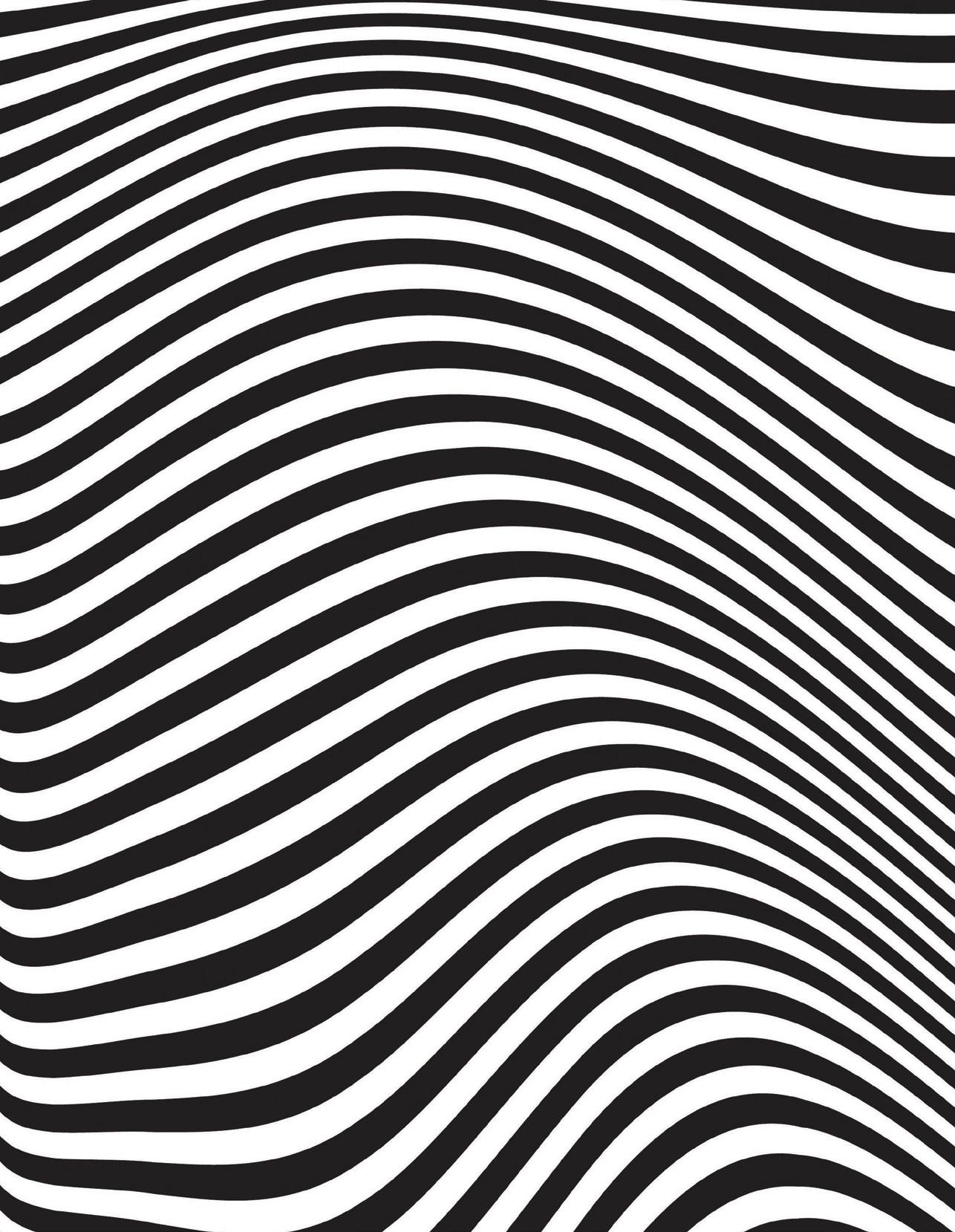
Author: Elizabeth Blaher-Lucas
Elizabeth Blaher-Lucas is a passionate and experienced VCE Psychology teacher, VCE psychology assessor, and examination panel member. In addition to having worked in both government and independent school environments for the past 20 years, Elizabeth has also co-taught 3rd and 4th year preservice psychology teachers at Monash University since 2018.

Author: Matthew Rock
Matthew Rock started his career as a chemist working in energy production and pharmaceuticals whilst finishing studying at Monash University with a double degree in Bachelor of Science/ Bachelor of Secondary Education. His passion in science led to a first teaching job at Trinity Grammar School for five years teaching VCE Chemistry and Psychology gaining skills as a subject coordinator, writer, assessor, and examiner. Matthew's current school, Camberwell Girls Grammar School, allows him to continue his passions in engaging with science, developing student wellbeing projects.

Author: Kerri Morey
Kerri is a passionate teacher of Psychology and Science, having taught at both government and independent schools in Victoria over the past 35 years. She is currently teaching and coordinating Psychology at Brauer College in Warrnambool. She has also enjoyed a variety of roles across different schools in pastoral care, with extensive experience and interest in fostering the wellbeing of students, and in teaching students to understand how to be effective learners through the application of psychology and neuroscience. Kerri has authored for a range of educational resources on the areas of psychology and student development and wellbeing and has been a VCAA exam assessor for Psychology over many years.
Author: Roger Edwards
Roger has been involved with the VCE Psychology course since its inception back in 1991. He taught VCE psychology for fifteen years and is currently the Supervising Psychologist at Monash University’s Krongold Clinic – a university-based clinic that provides affordable psychological and counselling services.
xii PSYCHOLOGY FOR VCE UNITS 1 & 2 OXFORD UNIVERSITY PRESS No part of this publication may be reproduced, stored in a retrieval system or transmitted in any form or by any means.


Reviewer: Elise Truong
Elise Truong has taught in the education system since 2009. She worked as an integration aid for four years prior to becoming a teacher in 2013. Elise has taught across the public and private sectors of education including within an alternative setting for disengaged youth. She holds a Bachelor of Psychology (Interpersonal and Organisational), a Graduate Diploma of Education (Secondary) with a major in English and Psychology and a Masters in Instructional Leadership. Elise has taught in the areas of English, Psychology and is a trained and practising IB Psychology (HL) teacher. Elise has taken up various roles in the educational setting including being a year 11 and 12 coordinator, and a lead teacher.

Reviewer: Sayeeda Bawa-Savant
Sayeeda Bawa-Savant is a professionally registered career practitioner and certified life coach with degrees and postgraduate studies in psychology, education, educational psychology, NeuroLinguistic Programming (NLP), and economics. She began her teaching journey almost two decades ago, in South Africa, with her commitment to her students promoting her to Head of Department roles and Head of a Science Saturday School Program. Sayeeda and her family moved to Australia, where her experience was swiftly recognised by educational institutions. She has held leading teacher roles in psychology and careers coaching, taught business studies, is an exam assessor, and is also a writer of psychology resources. Presently, she teaches in the areas of psychology, business studies, and humanities, while continuing to provide consultancy services in writing, and career and life coaching.

Reviewer: Michelle Maxwell
Michelle Maxwell is a proud Aboriginal woman who brings a self-determined Aboriginal voice and lens to her work, passion and drive for change, focusing on better outcomes for our Aboriginal communities. Michelle currently works as a therapist for Violet Dreaming. She was formerly the Manager of the Aboriginal Social and Emotional Wellbeing team at the Mental Health Reform Victoria, responsible for implementing the Aboriginal Social and Emotional Wellbeing recommendations from the Royal Commission into Victoria’s mental health system. Michelle has years of experience working in and alongside Aboriginal Community Controlled organisations developing the delivery of therapeutic services.
OXFORD UNIVERSITY PRESS MEET THE AUTHORS & REVIEWERS xiii No part of this publication may be reproduced, stored in a retrieval system or transmitted in any form or by any means.

KEY KNOWLEDGE

Distortions of perception 10 CHAPTER
→ the fallibility of visual perceptual systems, for example, visual illusions and agnosia

→ the fallibility of gustatory perception, for example, supertasters, exposure to miraculin and the judgment of flavours

→ distortions of perception of taste and vision in healthy individuals, such as synaesthesia and spatial neglect.
Source: VCE Psychology Study Design (2023–2027) reproduced by permission © VCAA

GROUNDWORK

This chapter will build on concepts you have come across in Chapter 9. Before starting the chapter, check how well you know the basics by completing this groundwork quiz.
INVESTIGATIONS





Groundwork quiz Chapter 10
10.2 INVESTIGATION: CONTROLLED EXPERIMENT Does perceptual set influence our judgment of flavours? Page 494 10.3 INVESTIGATION: LITERATURE REVIEW How can a non-synaesthete acquire synaesthesia? Page 496



382 PSYCHOLOGY FOR VCE UNITS 1 & 2 OXFORD UNIVERSITY PRESS
No part of this publication may be reproduced, stored in a retrieval system or transmitted in any form or by any means.
FIGURE 1 Visual illusions are caused by a misinterpretation of visual stimuli; in this photo the man appears to be giant compared to his two friends because he is closer to the camera. DRAFT
CONCEPT MAP
10.1 The fallibility of visual perception systems
Visual illusions
Agnosia
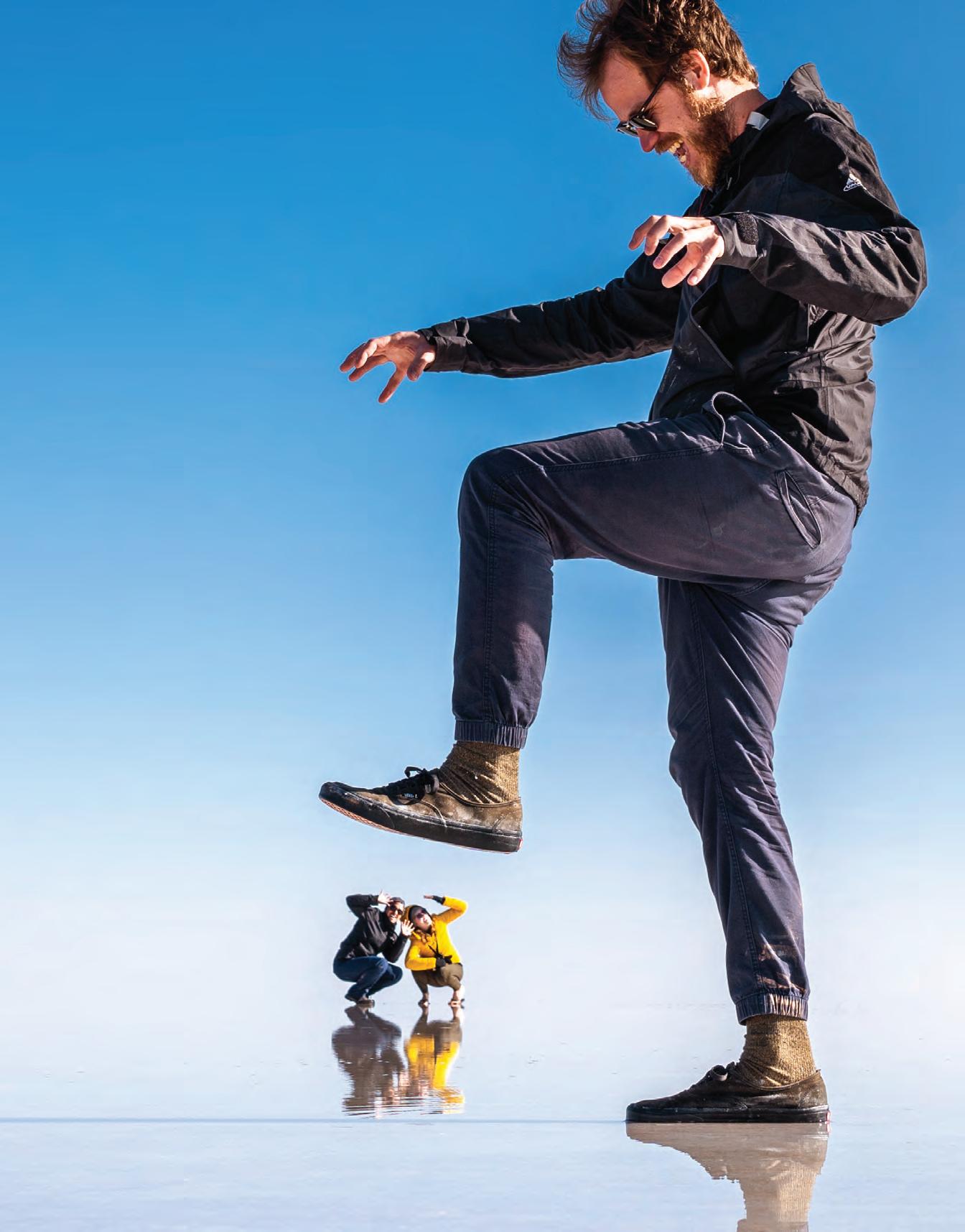
Ames Room illusion
Müller-Lyer illusion
Spinning Dancer illusion
Distortions of perception
10.3 Distortions of perception in healthy individuals
Synaesthesia
Spatial neglect
10.2 The fallibility of gustatory perception
Supertasters
Judgment of flavours
Exposure to miraculin
Perceptual set
Colour intensity
Texture of food
DRAFT
OXFORD UNIVERSITY PRESS UNIT 2 HOW DO INTERNAL AND EXTERNAL FACTORS INFLUENCE BEHAVIOUR AND MENTAL PROCESSES? 383
No part of this publication may be reproduced, stored in a retrieval system or transmitted in any form or by any means.
10.1
The fallibility of visual perception systems
KEY IDEAS
✚ Visual illusions distort real sensory stimuli to create a mismatch between the real-world visual stimulus and the brain’s interpretation of that stimulus.
✚ Damage to the brain’s cortex can cause conditions such as visual agnosia, resulting in an inability to recognise objects or familiar faces.
Fallibility of visual perception

fallible prone to error, which can occur when judging sensory stimuli


Perception is a complex process. To visually perceive something, the brain must be able to interpret sensory stimuli. Visual perception can be fallible when sensory stimuli are mistakenly interpreted – this in turn can lead to an altered perception. Misinterpretation of visual stimuli can be due to normal brain function when viewing optical illusions (see Figure 1) or due to abnormal brain function from neurological conditions. Understanding the fallibility of visual perception from illusions and agnosia can help better inform us about how the brain processes visual stimuli.
Visual illusions
visual illusion when we misinterpret real sensory stimuli to create a mismatch between the real-world stimulus and our perception
Ames room illusion an illusion created by a deliberately misshapen trapezoidal room where people walking across the room appear to be growing and shrinking in size

FIGURE 1 This illusion causes our brain to misinterpret the image and think the background is moving.
A visual illusion occurs when we misinterpret real sensory stimuli, creating a mismatch between the real-world visual stimulus and the perception formed in our brain. This phenomenon happens when our perceptions of a stimulus are consistently different to what is really shown. Even if we become aware that what we are perceiving is an illusion, we cannot help but perceive the distorted image. Illusions are created by psychological factors, where the way we interpret stimuli is influenced by the constructs in our brain that usually help us make sense of the world. Three common visual illusions we will explore in this topic are:
• the Ames room illusion
• the Müller-Lyer illusion
• the Spinning Dancer illusion.
Ames room illusion
The Ames room illusion is a visual illusion that deliberately distorts a viewer’s perception to give them the impression that someone is growing or shrinking in size as they walk across a room. The illusion was invented by Adelbert Ames Jr in 1946. Ames created a trapezoidalshaped room that appeared to be rectangular when viewed through a peephole with one eye. This created the perception that the room was a normal right-angled room when it was actually distorted. The actual shape of the room was irregular, with one corner a greater distance away from the viewer than the other (Figure 2). What the viewer does not perceive without access to depth perception is that the floor and ceiling in one corner of the room are closer to each other than in the corner on the other side of the room.
OXFORD UNIVERSITY PRESS 384 PSYCHOLOGY FOR VCE UNITS 1 & 2 DRAFT No part of this publication may be reproduced, stored in a retrieval system or transmitted in any form or by any means.
The science of illusion

FIGURE 2 From the peephole, the Ames room appeared to be a regular rectangular-shaped room, but it was actually an irregular shape.
To experience the Ames room illusion, the viewer needs to look through a peephole from a specific location, which makes the room appear to be a regular rectangular shape (Figure 3). The viewer is also required to use only one eye to view through the peephole – this prevents the viewer using binocular depth cues that would normally enable them to perceive depth and judge distance. As the viewer observes a person inside the room through the peephole, the person appears to get bigger as they move across what appears to be a regular-shaped room (Figure 4). Our brain perceives this person as starting on one side of a normal-shaped room with right-angled corners and a normally positioned floor and ceiling, because our experience tells us that rooms are regularly shaped. We are therefore unaware that the person begins in a position further away from us.
The Ames room illusion distorts our perception of depth and distance. In the illusion, a person is placed in an irregularly shaped room that is designed to distort our visual cues. As a person walks from one side of the room to the other, our brain mistakenly perceives them to be staying the same distance from us while they move. Realistically, the room is constructed in such a way that the back wall is not parallel to the viewer, but angled. This creates an optical illusion that makes the room appear perfectly rectangular when viewed from the peephole with one eye closed.
DRAFT
FIGURE 3 How the Ames room illusion is perceived by the viewer
Actual position of Person A
Actual and apparent position of Person B
Apparent position of Person A
Viewing peephole
Apparent shape of room
OXFORD UNIVERSITY PRESS CHAPTER 10 DISTORTIONS OF PERCEPTION 385
Ames room illusion
No part of this publication may be reproduced, stored in a retrieval system or transmitted in any form or by any means.
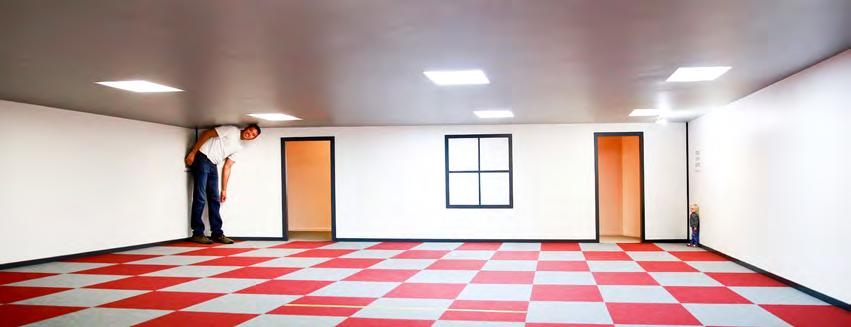
4 The view from the peephole of an Ames room makes the room appear to be a regular shape. In this image, the person in the right corner is positioned further away from the viewer than the person in the left corner, leading to the perception that one person is giant-sized and the other is tiny.
As a person walks from one side of the room to the other, they are really moving closer or further away from us due to the angle of the back wall, despite our perception telling us otherwise. Our brain relies on the assumption that the room is rectangular, and the person is at a constant distance as we interpret what we see. Since our brain expects the person to remain the same distance away, the retinal image of the person on our eyes changes from small to large, leading us to perceive the person walking as growing (if they are moving closer to us) or shrinking (if they are moving further away from us).
DRAFT
If you entered an Ames room, the structure of the room would become obvious because it can be seen for what it is rather than what it appears to be through the peephole. This is due to the outside viewer’s inability to use their binocular depth cues when looking through the peephole with one eye. Even if we become fully aware of the room’s shape and distortions, the effect is so powerful that if we looked through the peephole to view someone walking again, we would still perceive them to be growing or shrinking in size. Movie set designers use this illusion to their advantage to create special effects. For example, in the Lord of the Rings movies this illusion was used to make Gandalf appear larger than the hobbits, as seen in Figure 5.
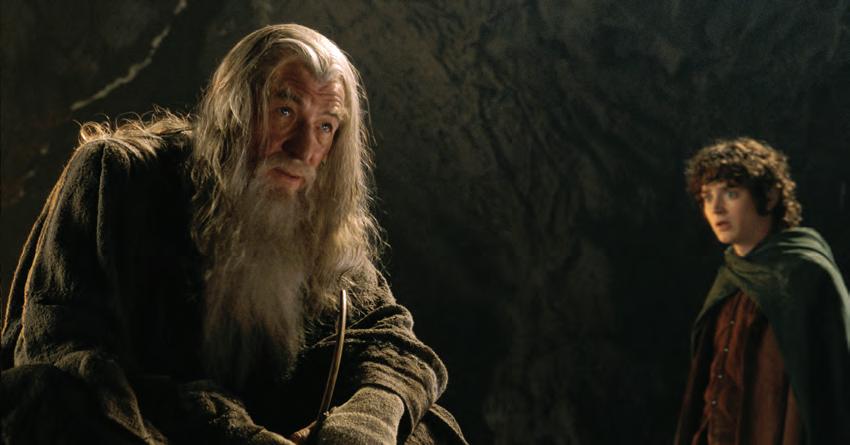 FIGURE 5 The Lord of the Rings trilogy used the illusions of depth and distance to make Gandalf appear larger than the hobbits.
FIGURE 5 The Lord of the Rings trilogy used the illusions of depth and distance to make Gandalf appear larger than the hobbits.
OXFORD UNIVERSITY PRESS 386 PSYCHOLOGY FOR VCE UNITS 1 & 2
FIGURE
No part of this publication may be reproduced, stored in a retrieval system or transmitted in any form or by any means.
10.1 CHALLENGE
Putting the Ames room into practice
Movie set designers have used the Ames room illusion to their advantage for creating special effects in movies. Imagine you need to direct a scene for a movie where you need to make the Hulk appear large and Antman appear miniature.
1 Draw an Ames room diagram showing where you would place the Hulk and where you would place Antman to achieve the intended effect.
2 Explain how the positioning of your characters in the Ames room set-up affects how they are perceived by the viewer.
Müller-Lyer illusion


The Müller-Lyer illusion is an illusion where two lines of the same length are given different ends, leading the viewer to misinterpret their length. The visual illusion was created by German psychologist Franz Carl Müller-Lyer in 1889. The difference between the two lines is the pattern at each end – one line has regular arrowheads while the other has feather tails (inverted arrowheads), as shown in Figure 7. To most people, the line with the arrowheads appears shorter than the line with feathertails, even though they are the same length.
One explanation to help us understand this illusion is based around depth cues that normally help us to judge distance. This idea suggests that we are fooled by the Müller-Lyer illusion due to our experiences with rectangular buildings, where the lines of floors and ceilings extending away from us create a sense of depth (Figure 8). Richard Gregory (1969) proposed the carpentered world hypothesis based on this idea. Gregory believed that when we view a two-dimensional image such as the Müller-Lyer illusion, we automatically apply depth cues as if we are viewing the three-dimensional images of buildings.
According to Gregory, when we observe the arrowheads pointing away from the central line in the Müller-Lyer illusion, our perception interprets the line as the vertical edge of a building’s external walls (Figure 8a). On the other hand, the line with a feathertail line (inverted arrows) is perceived as representing the edge of two internal walls, in a similar manner to the inner corner of a room (Figure 8b).



When we apply depth cues and our understanding of spatial arrangement to this two-dimensional image, the arrowhead line appears to be shorter than the feather tail line. Our brain assumes that the arrowhead line is projecting towards us and is therefore closer than the feather tail line, which is projecting away from us.
Müller-Lyer illusion an illusion created by a misinterpretation of two identical length lines that appear to be different due to differently shaped ends
appears shorter?
carpentered world hypothesis a theory applied to the Müller-Lyer illusion that proposes that our familiarity with the straight lines and angles of buildings informs our interpretation of linear perspective in pictorial depth perception
FIGURE 6 The Incredible Hulk
FIGURE 7 The Müller-Lyer illusion; which line appears longer and which
The Muller-Lyer illusion
a b
FIGURE 8 Which room (a or b) has higher walls? The Müller-Lyer illusion is affected by our judgment of depth.
OXFORD UNIVERSITY PRESS CHAPTER 10 DISTORTIONS OF PERCEPTION 387
No part of this publication may be reproduced, stored in a retrieval system or transmitted in any form or by any means.
DRAFT
misapplication of size constancy the incorrect use of cues that would normally assist us in accurately perceiving properties such as size
Since our experience of the world tells us that objects in the distance are expected to be smaller than when closer to us, our perception tricks us into perceiving the feathertail line as longer. This is despite the reality that both lines are the same length.
Another explanation to help us understand this previous idea suggests that we perceive the illusion due to the misapplication of size constancy. When applying size constancy, we usually perceive three-dimensional objects as actually being the same size when viewed from different distances, despite the retinal image being different. However, when we apply this same principle to a two-dimensional image such as the Müller-Lyer illusion, we inaccurately apply these rules to perceive the two lines at different distances. Because of this, we perceive the lines to be of two different lengths, despite them being the same.
Studies have been conducted in different cultures to determine if this illusion is based upon experience. Some have been conducted on participants in African nations that have a mix of rectangular architecture in urban centres as well as round huts in rural areas. When the illusion was shown to rural Zambians who had no exposure to rectangular buildings, they were not fooled by the illusion and tended to perceive the lines as the same length. However, Zambians living in urban areas did perceive the lines to be different lengths (Ahluwalia, 1978). This supports the idea that experience with buildings can influence our perception of the Müller-Lyer illusion.
perceptual compromise theory
an explanation for the Müller-Lyer illusion that proposes that we perceive the line with the feathertail ends as being longer than the arrowhead line due to application of the Gestalt principle of closure
An alternative explanation for the Müller-Lyer illusion is the perceptual compromise theory proposed by Australian psychologist R.H. Day (1989). This theory suggests that when we look at the lines of the Müller-Lyer illusion, we are influenced by both the length of the line and the overall length of the figure. The line with the feathertails at each end has a total length longer than the line with arrowheads, so we are influenced by the overall length and therefore perceive the feathertail line as longer. When looking at these figures, Day believed that our perception is conflicted and makes a compromise to judge the longer overall figure as being a longer line.
1.
When viewing the open figures in the Müller-Lyer illusion, our mind applies the Gestalt principle of closure (blue lines).
9 How we view the Müller-Lyer illusion according to perceptual compromise theory.
DRAFT
Our mind then averages out the blue and black lines and we perceive the length of each figure as the average length (distance between yellow lines). 2.
FIGURE
OXFORD UNIVERSITY PRESS 388 PSYCHOLOGY FOR VCE UNITS 1 & 2
No part of this publication may be reproduced, stored in a retrieval system or transmitted in any form or by any means.
Spinning Dancer illusion
In 2003, Japanese web designer Nobuyuki Kayahara created the Spinning Dancer illusion. The illusion shows a spinning silhouette of a dancer that is perceived by some viewers to be spinning clockwise, and by others to be spinning counterclockwise. It is also possible to see the dancer spinning one way and then the other. A change in direction can be activated by blinking, tilting your head or focusing on a specific part of the image.
This illusion is believed to happen because the dancer is an ambiguous two-dimensional figure that can be seen from two different perspectives. This ambiguity presents our visual perception with different interpretations (Figure 10). The image of the dancer also lacks visual depth cues, which prevents our brain from interpreting it as a three-dimensional image where some parts of the body are seen as closer to the viewer than others. If the image included depth cues, our brain would be able to process and interpret it as a dancer spinning in one specific direction.
Agnosia
Agnosia is a rare neurological condition that disrupts the brain’s ability to process sensory information. This results in difficulty recognising objects, faces, voices or places. Agnosia usually only affects a single sensory pathway, which means most affected individuals are still able to interact with the world using their other senses. The name “agnosia” is derived from the Greek “gnosis”, or “not knowing”.
Agnosia usually occurs from damage to the brain caused by conditions including stroke, dementia or traumatic brain injury (TBI). Neuroimaging tests such as CT and MRI scans can be used to help diagnose agnosia. While there is no specific treatment for agnosia itself, the underlying cause of agnosia can sometimes be treated. For example, if a brain tumour has caused agnosia, then radiation therapy or surgery on the tumour may reduce the effects of agnosia. Living with agnosia can be challenging, but familiar routines, predictable environments and labelling items may assist with managing the disorder on a daily basis.
Visual agnosia
Visual agnosia is the inability to name, recognise or describe the use for an object when looking at it. It occurs when the brain is damaged along neural pathways that connect the occipital lobe (which processes visual stimuli) to the parietal or temporal lobes (which allow us to understand the visual stimuli).
Typically, if we were to look at a flower, the visual stimulus of the flower would be sent to the occipital lobe at the rear of our brain. To understand what this stimulus is, information would then be sent to our parietal and temporal lobes. We could then recognise the flower and give it a name. For those who have visual agnosia, this pathway to the parietal and
DRAFT
Spinning Dancer illusion a spinning dancer silhouette that appears to spin both clockwise and counterclockwise agnosia neurological disorder resulting in difficulty recognising objects, faces, voices or places
FIGURE 10 Diagram showing the clockwise and counterclockwise perspectives of the spinning dancer – the ambiguity and lack of depth cues in the real image show how our brain can perceive the dancer spinning in one direction or the other.
visual agnosia a condition that results in the inability to describe, recognise or name an object seen
Real
Illusion 1 (spinning clockwise)
Illusion 2 (spinning counterclockwise)
OXFORD UNIVERSITY PRESS CHAPTER 10 DISTORTIONS OF PERCEPTION 389
No part of this publication may be reproduced, stored in a retrieval system or transmitted in any form or by any means.
prosopagnosia
a condition that results in the inability to recognise faces
temporal lobes is damaged and results in the inability to recognise an object, such as a flower, from visual sensory information alone. As agnosia typically only affects one sensory pathway, a person with visual agnosia who is asked to touch the flower and feel its texture would likely be able to recognise it as a flower. This is because the neural pathways that allow us to process sensory information from touch are not damaged or affected.
Prosopagnosia is a specific form of visual agnosia that results in a person being unable to recognise the faces of people they know very well, or even of themselves. It occurs when the neural pathway leading from the occipital lobe to the specific region in the temporal lobe responsible for recognising faces is damaged. Perception of this visual stimuli (a person’s face) is therefore unable to be processed regularly. People with prosopagnosia can also mistake a person’s face with an object and vice versa. Prosopagnosia often occurs with neurological conditions that interfere with neural pathways, such as Alzheimer’s disease.
10.1 CHECK YOUR LEARNING
Describe and explain
1 Define the term “visual illusion”.
2 Describe the Ames room illusion.
3 Explain why a figure appears to shrink and grow as it moves across an Ames room.
4 Identify the distortion we perceive when looking at the Müller-Lyer illusion.
5 Explain how the lack of visual depth cues leads to the Spinning Dancer illusion.
6 Outline what causes a person to experience visual agnosia.
Apply, analyse and compare
7 Apply your understanding of depth cues to explain the Müller-Lyer illusion.
DRAFT
Design and discuss




8 Discuss how a person with prosopagnosia might respond when asked to identify a person from an image of their face.
9 Create a Venn diagram to map out the similarities and differences between the Ames room illusion and the Müller-Lyer illusion.
10 Create an Ames room by printing out the template linked in the hotspot and assembling it according to the instructions. Place two identical objects in the two distant corners of the room. Observe any difference and discuss why this occurs.
11 Predict the effect of a larger peephole on the Ames room illusion. Justify your prediction.
FIGURE 11 Prosopagnosia is a form of visual agnosia where a person is unable to recognise people from looking at their faces.
OXFORD UNIVERSITY PRESS 390 PSYCHOLOGY FOR VCE UNITS 1 & 2
No part of this publication may be reproduced, stored in a retrieval system or transmitted in any form or by any means.
10.2
The fallibility of gustatory perception
KEY IDEAS
✚ Taste perception involves the integration of stimuli from the senses of vision, taste, smell and touch.
✚ Gustatory perception can be fallible due to supertasters, exposure to miraculin, past experiences, colour intensity and texture.
Fallibility of gustatory perception
gustatory cortex the region of the brain where taste information is processed
Taste is one of life’s greatest pleasures. To perceive food flavours we rely on the complex integration of stimuli from our senses of vision, taste (gustation), smell and touch. When eating a ripe strawberry, the juicy texture of the fruit as we bite on it, the bright red colour, the sweet smell and sweet flavour all combine to create the intensity of flavour that we recognise as the taste of a fresh strawberry (Figure 1). Our gustatory cortex is a specialised area in the cerebral cortex that processes sensory stimuli to create our perception of taste or gustatory perception. In this topic we will look at how our gustatory perception is influenced by several factors, many of which can lead us to form fallible perceptions of taste.
Supertasters
papillae small round bumps located on the surface of the tongue that play a role in taste and gripping food

FIGURE 1 Our perception of what a strawberry tastes like comes from the combination of its colour, texture, smell and flavour.
Papillae are small, raised structures on the surface of the tongue that play a role in detecting and perceiving information from the food and drinks we consume. There are many different types of papillae that have specific roles in detecting information. These include:
• filiform papillae – detect texture and provide friction on the tongue
• fungi form papillae – involved in perceiving sweet, sour, bitter, and umami tastes, and are dispersed across the tongue (generally more concentrated at the tip of the tongue)
• foliate papillae – located along the sides of the tongue that are involved in detecting sour and salty tastes
• circu mvallate papillae – large papillae located along the back of the tongue (often in a v-shaped row) primarily responsible for detecting bitter tastes.
OXFORD UNIVERSITY PRESS CHAPTER 10 DISTORTIONS OF PERCEPTION 391 DRAFT No part of this publication may be reproduced, stored in a retrieval system or transmitted in any form or by any means.











Circumvallate papillae
Foliate papillae




Fungiform papilla Taste bud
FIGURE 2 Foliate, fungiform and circumvallate papillae all contain taste buds.
Non-taster tongue
Supertaster tongue
Fungiform, foliate and circumvallate papillae all contain specialised sensory receptors called taste buds (see Figure 2). Taste buds contain gustatory cells, which detect sensory information and transmit signals to the brain. Taste buds respond differently to different tastes such as sweet, bitter, salty, sour and umami.






medium taster a person who falls within the average range of taste sensitivity (without extreme sensitivity or insensitivity to certain flavours)


non-taster an individual who has a decreased sensitivity to tastes













A supertaster is a person who experiences a heightened sense of taste for certain flavours compared to what is experienced by most people. Supertasters commonly have an increased sensitivity to bitter flavours, leading to strong food preferences and dislikes of specific foods. Supertasters can experience a heightened sense of taste due to the large number of taste buds on their tongue (Figure 3). Most adults have between 2000 and 10,000 taste buds on their tongue, and those who have closer to 10,000 are considered supertasters. Most supertasters have the TAS2R38 gene, which predisposes them to a greater number of papillae and therefore taste buds on their tongue. The large number of taste buds leads to supertasters having extreme sensitivity to the taste of bitter and sweet foods. Because of their sensitivity to certain tastes, it is common for supertasters to dislike bitter foods such as broccoli, spinach, rocket, kale, brussels sprouts, coffee, beer and
dark chocolate. A person who strongly dislikes eating bitter green leafy vegetables, such as kale and rocket, may in fact be a supertaster. Supertasters often tend to add more salt and sugar to bitter-tasting foods to mask their bitterness.
Of the general population, approximately 25 per cent are supertasters, 50 per cent considered medium tasters, and 25 per cent are non-tasters. Medium tasters can perceive bitter-tasting foods but are not highly sensitive to their taste. Nontasters have a lessened ability to perceive flavours. Non-tasters often think food tastes bland and will add condiments to their food, such as hot sauce, to increase the intensity of flavour (Figure 5). Non-tasters also prefer fatty foods, seasonings and sweet-tasting foods.

DRAFT
FIGURE 4 Rocket is a leafy green that has a sharp, peppery flavour. Many people love it, but to a supertaster, it could taste extremely bitter – a totally different experience.

5 Do you know someone who is always adding sriracha or hot sauce onto their food? They may be a non-taster!
FIGURE 3 A supertaster has more papillae on the surface of their tongue than a non-taster.
FIGURE
Papillae
OXFORD UNIVERSITY PRESS 392 PSYCHOLOGY FOR VCE UNITS 1 & 2
No part of this publication may be reproduced, stored in a retrieval system or transmitted in any form or by any means.
Exposure to miraculin
Synsepalum dulcificum or “miracle fruit” is a shrub native to West and Central Africa known for its taste-modifying berries. The berries of the shrub contain a chemical called miraculin , which can alter taste to make sour foods taste sweet (see Figure 6). While the miracle fruit berry is not sweet- tasting itself, once eaten, the miraculin chemical binds to sweetness receptors on the taste buds of papillae that detect sweetness. This action temporarily sweetens our taste so that sour foods, such as apple cider vinegar or lemons, lose their typical acidic flavours and are instead perceived as sweet. The effect of miraculin is only activated when sour food is introduced; other food flavours (for example, bitter or salty) are unaffected by the chemical. The effects of miraculin typically last for around half an hour, or until the chemical is diluted by our saliva. Miraculin can turn sour worms into sweet lollies and cause sour lemons and limes to taste like sweet oranges. Exposure to miraculin therefore alters our perception of taste.
Judgment of flavours

Our ability to judge the flavour of food relies on our senses and memory of past experiences with food. Our judgment of flavour can also be fooled by a range of factors which lead us to believe the taste of something differs to what it actually is. Factors such as perceptual set, colour intensity and the texture of our food can all interfere with our judgment of food flavours.
Perceptual set
As discussed in Chapter 9, our perceptual set is our tendency to perceive specific aspects of available sensory information based on our set expectations. Our perceptual set and expectations of what food will taste like can influence our perception and experience of food flavours. For example, consider the traditional cheese from Sardinia, Italy, called casu marzu that contains live maggots (see Figure 7). To those who grew up with the cheese, it is often considered a delicacy and extremely tasty.
However, to people that associate maggots with fly-blown food not fit to eat, just the idea of eating a maggot could trigger a response of disgust and interfere with that person’s gustatory perception of the cheese. If the cheese was served up as a sample in a blind food test, a person disgusted by maggots would be better able to evaluate the true taste of the cheese and may even enjoy it. This is because they would not have their pre-existing ideas about maggots interfering with their perception of the taste of the cheese.
DRAFT
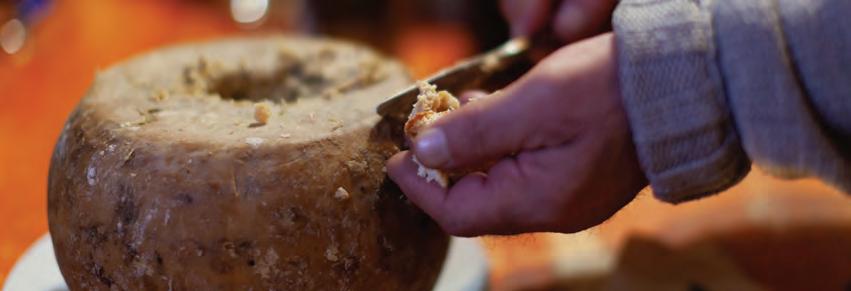
6 Synsepalum dulcificum, or “miracle fruit”, produces berries that contain the taste-modifying chemical miraculin.
miraculin a chemical extracted from the “miracle fruit” that causes sour foods to taste sweet
FIGURE
10.2 INVESTIGATION: CONTROLLED EXPERIMENT Does perceptual set influence our judgment of flavours? Go to page 494 OXFORD UNIVERSITY PRESS CHAPTER 10 DISTORTIONS OF PERCEPTION 393
FIGURE 7 Casu ma rzu is now illegal to eat in Italy and Europe due to health concerns; however, it is sold illegally on the Sardinian black market, showing the lengths people will go to eat the cheese.
No part of this publication may be reproduced, stored in a retrieval system or transmitted in any form or by any means.
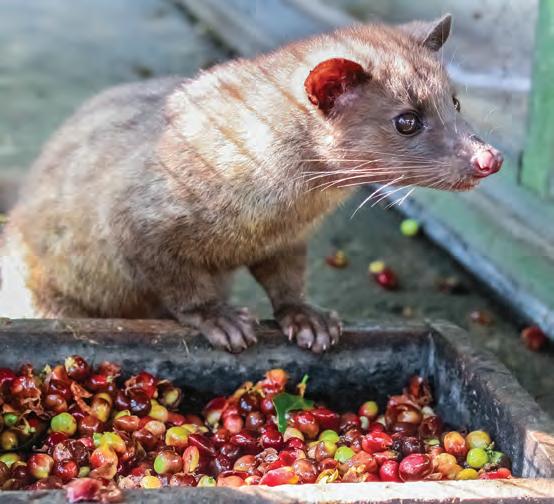
Another example of how perceptual set can influence taste is Indonesia’s Kopi Luwak coffee. This coffee is brewed from beans that have been passed through the faeces of an Asian palm civet (Figure 8). Some coffee drinkers expect that the coffee must taste amazing because it is expensive to purchase and therefore must be of high quality. To others, the coffee is completely unpalatable because it has been sourced from animal faeces. Different sets of expectations can lead to different gustatory perceptions of the Kopi Luwak coffee.
The appearance of food and food packaging can also influence our perceptual set and therefore our gustatory perception. If given the choice of a plainly packaged supermarket house-brand chocolate biscuit or a well-known quality brand chocolate biscuit, many people will choose the more expensive brand because the quality of packaging or brand associations are tied to an expectation that the product will taste better.
Colour intensity
intensity
Colour intensity refers to how bright or dull the colour of an object or item is. The colour intensity of foods can lead us to taste flavours that are simply not there. As children, we learn to associate intensely coloured foods, such as red icy poles and red cordial, with an intensely sweet taste. The stronger or more vivid the colour, the sweeter the foods are usually perceived to taste. This past experience teaches us that intensely coloured food will have an intense flavour and leads us to expect this in future experiences with food.

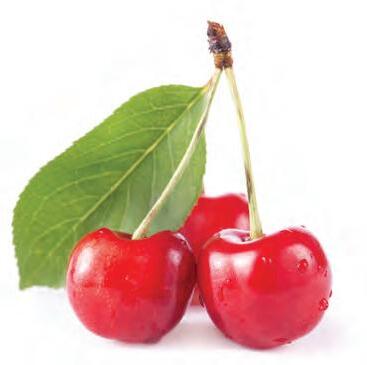
Our gustatory perception of a sweet or intense flavour can differ to how much flavour is truly present. This is because the brain can perceive intensity because it has learned to expect it. This association has led to some food brands adding an intensely coloured dye to their food products, a common practice in the production of coloured confectionery and soft drinks. Food manufacturers do this in the hope that the consumer will perceive the product to be full of flavour or sweetness.
Colour can also confuse our flavour perception. For example, it is common to expect intensely coloured red cordial and red icy poles to have a strawberry or raspberry flavour. If we were asked to identify the flavour of different coloured solutions that are simply water and food dye, we are likely to perceive the flavour that corresponds with the colour. For example, a green solution of water and food dye is likely to be perceived as lime flavoured while a red solution of water and food dye is likely to be perceived as strawberry.
FIGURE 8 An Asia n palm civet consuming coffee beans that will later be collected from its faeces to produce Kopi Luwak coffee.
FIGURE 9 Consider the white cherries and the red cherries shown. Which do you think has the more intense cherry flavour? Most people would say the red cherries due to their colour intensity.
OXFORD UNIVERSITY PRESS 394 PSYCHOLOGY FOR VCE UNITS 1 & 2
No part of this publication may be reproduced, stored in a retrieval system or transmitted in any form or by any means.
colour
depth of colour
DRAFT

11 Did you k now that the rainbow and caramel PaddlePops™ are the same flavour? The only difference between the two is the coloured dye used.
Food texture

Texture describes the way food feels in our mouth – it is often described using words such as juicy, crunchy, creamy, tough, grainy, crisp or tender. The texture of foods can also influence our judgment of the flavour of foods. As a marketing tool, companies like to use texture-specific words to describe food products because the sensation described can produce a desirable eating experience. Throughout childhood we learn to associate certain textures with foods – potato chips are crunchy, apples are juicy, ice cream is creamy. When the foods we consume have the texture we expect them to have, we perceive them to taste their best. For example, most people would consider a soggy potato chip less tasty than a crunchy potato chip, or flat soft drink less tasty than fizzy soft drink. We can also change the texture of food to alter flavour perception. For example, grated apple can be thought to taste different to crunching on a whole apple, and pureed apple tastes different to apple juice.
10.2 SKILL DRILL
Making predictions about perception investigations
Key science skill: Develop aims and questions, formulate hypotheses and make predictions
texture the way food feels in our mouth

Mr Smith decided to test the influence of colour intensity on the judgment of food flavours with his VCE Psychology class. He asked 10 volunteers to taste from each of four glasses of water – each glass was half filled with water and either one, two, three or four drops of red food dye. This food dye influenced the colour intensity but not the flavour. Mr Smith asked each volunteer to rate the sweetness of each glass as they were presented in random order.
Practise your skills
1 Ident ify the IV and DV for this experiment.
DRAFT
2 Ident ify the type of experiment conducted by Mr Smith – is it a within-subjects or between-subjects design? Justify your answer.
3 Predict the likely results of Mr Smith’s experiments. Justify your prediction. Need help identifying variables and making predictions? See Topic 1.2 (page 9).
12 Most pe ople expect potato chips to be crispy and would be disappointed with the taste of a soggy potato chip!
FIGURE 10 Food and drink manufacturers often add intense dyes to their products so that consumers associate their products with intense flavours.
FIGURE
OXFORD UNIVERSITY PRESS CHAPTER 10 DISTORTIONS OF PERCEPTION 395
FIGURE
No part of this publication may be reproduced, stored in a retrieval system or transmitted in any form or by any means.
10.2 CHALLENGE
Applying population statistics to other samples
Mrs Cook decided to give her 20 students coriander to taste test. She gave each student a small sample of fresh coriander and asked them to taste it, then report its flavour as either pleasant or unpleasant.
What percentage of Mrs Cook’s class is likely to report the coriander taste as being unpleasant? What would this group of students be called – non-tasters, medium tasters or supertasters?

10.2 CHECK YOUR LEARNING
Describe and explain
1 Describe the sensory stimuli that combine to create our perception of food.
2 Define a supertaster.
3 Describe the effect of miraculin on taste buds.
4 Explain how our judgment of flavours can be influenced by colour intensity. Give an example.
5 Explain why coriander tastes different for a supertaster as compared to a medium-taster or non-taster.
Apply, analyse and compare
6 Compare the taste of a lemon before and after miraculin.
Design and discuss
7 Discuss how perceptual set could influence our perception of the flavour of kangaroo meat.


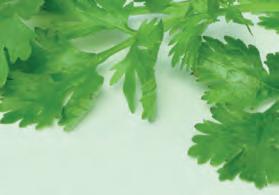
DRAFT
• an aim
• a hypothesis
• the IV and DV





8 a Design a simple experiment to investigate the influence of the texture of corn chips on perception of flavour. You should include the following:
• your method (including information on the sample, materials used, set-up and how you will collect data).
b Discuss your expected results and explain why, with reference to your understanding of the influence of food texture on the judgment of flavour.
OXFORD UNIVERSITY PRESS 396 PSYCHOLOGY FOR VCE UNITS 1 & 2
FIGURE 13 This investigation involves taste testing coriander.
No part of this publication may be reproduced, stored in a retrieval system or transmitted in any form or by any means.
10.3 Distortions of perception in healthy individuals
KEY IDEAS
✚ Synaesthesia creates an enhanced sensory experience because of increased neural connectivity between sensory areas of the cortex.
✚ Spatial neglect patients lack the ability to perceive and respond to stimuli on one side of their body due to brain injury.
Perceptual distortions create unique experiences

Dorothy Latham’s synaesthesia
synaesthesia a phenomenon where individuals experience an integration of senses when one sense is stimulated
Neuroscientists learn a great deal about the human brain through studying the brains of healthy individuals. They are also able to add to our understanding of brain function by studying individuals who have unique experiences of processing and perceiving information. In this topic, we will look at two conditions that lead to distortions of perception in healthy individuals: synaesthesia and spatial neglect.
Synaesthesia
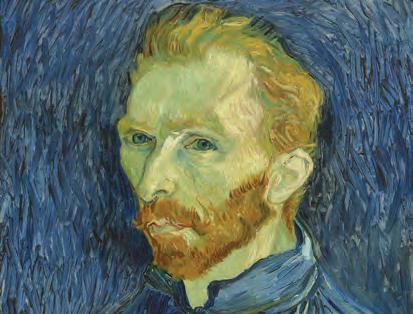
FIGURE 1 Some individuals perceive life differently to most. Artist Vincent van Gogh perceived sounds to have certain colours due to a neurological condition called synaesthesia.
Synaesthesia is a neurological condition where stimulation of one sensory pathway leads to the involuntary stimulation of another sensory pathway. The term “synaesthesia” means “to perceive together” and describes the experience of two or more senses being experienced at the same time. Stimulating one sense will involuntarily stimulate the perception of another sense so that the brain thinks they are intricately connected. For example, Kaitlyn Hova, a professional violinist, composer and neuroscientist, grew up assuming it was normal to see flashes of colour as she played the violin. She now recognises that her experience of music is not shared by everyone, and is instead caused by synaesthesia. Kaitlyn’s senses of sound and vision are blended, so that when she plays the C note on her violin, she perceives flashes of red, the D note creates flashes of blue, E a super-yellow, F a light green and G a deep green.
2 When
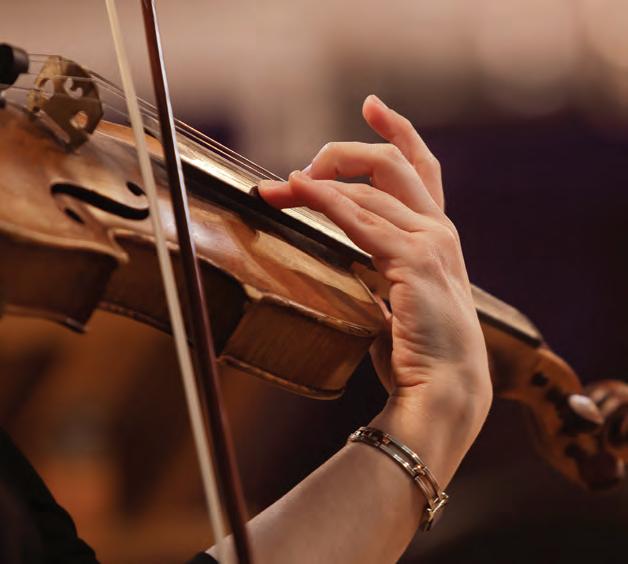 FIGURE
Kaitlyn Hova plays the violin, each note triggers the flash of a distinct colour.
FIGURE
Kaitlyn Hova plays the violin, each note triggers the flash of a distinct colour.
OXFORD UNIVERSITY PRESS CHAPTER 10 DISTORTIONS OF PERCEPTION 397 DRAFT No part of this publication may be reproduced, stored in a retrieval system or transmitted in any form or by any means.
synaesthete an individual with synaesthesia
For Kaitlyn, music is an immersive experience where she cannot separate the visual experience from the musical notes – the notes and colours always occur together and in the same way. She believes this experience has enhanced her ability to perceive music as a complete sensory experience. Kaitlyn’s blended sensory experience of sound and colour is unique. The colours she associates with specific notes can differ from other synaesthetes who experience a similar type of synaesthesia.
Some synaesthetes “taste” sound, while others might “hear” colours or “taste” shapes. James Wannerton, a synaesthete who learned languages at school, describes French as tasting of “runny egg” while German tastes like “marmalade” (Figure 3).
poly-synaesthete an individual who experiences more than one type of synaesthesia
grapheme–colour synaesthesia a form of synaesthesia where letters, digits or words are perceived as having colours
chromaesthesia a form of synaesthesia where sounds are perceived to have colours
lexical–gustatory synaesthesia a form of synaesthesia where letters or words are perceived to have a particular taste
auditory tactile synaesthesia a form of synaesthesia where sounds are perceived to have a physical sensation, such as pressure, heat or pain
Synaesthetes also consistently experience the same unique sensory associations. For example, when Kaitlyn hears the C note, she always sees a red flash and not another colour. Since synaesthetes grow up accustomed to their integrated senses, it can often be a surprise when a synaesthete realises that not all people have the same sensory experiences. Some synaesthetes can even experience multiple forms of synaesthesia; these individuals are known as poly-synaesthetes
Varieties of synaesthesia include:
• grapheme–colour synaesthesia – when letters, words or numbers are associated with specific colours (Figure 4)
• chromaesthesia – when sounds are associated with seeing colours
• lexical–gustatory synaesthesia – when letters or words are associated with a particular taste
• auditory tactile synaesthesia – when sounds trigger physical sensations, such as tingling, pressure or change in temperature.
DRAFT
Approximately 3 to 5 per cent of the population experience synaesthesia. The condition is considered neurotypical because the brain can function normally when creating each enhanced perceptual experience. Synaesthesia tends to run in families and is thought to be determined by a genetic trait carried on the X-chromosome. However, the specific type of synaesthesia is not believed to be genetically inherited because sensory associations can vary between family members. For example, a mother might associate words with different tastes, while her son sees shapes when hearing sounds. The condition is more common in women and occurs more frequently in artistic people. Famous synaesthetes include Billie Eilish, Vincent van Gogh, Billy Joel and Pharrell Williams. Artists and musicians with synaesthesia will often describe their experience as being a significant part of their creativity. Synaesthesia is also thought to improve memory recall for some individuals because they can more easily recall things they associate with a specific sense.
“Bonjour”
“Guten Tag”
FIGURE 3 James Wannerton perceives French language as tasting like runny eggs and German as tasting of marmalade.
OXFORD UNIVERSITY PRESS 398 PSYCHOLOGY FOR VCE UNITS 1 & 2
No part of this publication may be reproduced, stored in a retrieval system or transmitted in any form or by any means.
spatial neglect a disorder created by a damaged parietal lobe where a patient ignores the one side of their world
Spatial neglect
Spatial neglect is a neurological condition where someone is unable to perceive or respond to stimuli on one side of their body. Spatial neglect is typically caused by injury to the right parietal lobe. To understand the effects of spatial neglect, consider Peggy, who experienced a stroke in her early sixties. Peggy recovered from the stroke but afterwards was unable to perceive the left side of her world (left-sided neglect). Peggy’s stroke damaged an area at the rear of her right parietal lobe normally involved in processing spatial tasks. Peggy now systematically ignores the left side of her world – her visual sensory system is unaffected, but she does not pay attention to her left field of view. Peggy does not notice food on the left side of her plate, or untidy hair on the left side of her head when she brushes her hair. Peggy also only applies make-up to the right side of her face. When asked to copy a drawing of a flower, Peggy carefully draws petals of the right side of a daisy, and then sits back believing the drawing is finished. When asked to read the word NETBALL, Peggy only sees the word BALL.
left-sided neglect
spatial neglect characterised by the inability to perceive and interact with stimuli appearing on the left side of the body due to damage in the right hemisphere
right-sided neglect
spatial neglect characterised by the inability to perceive and interact with stimuli appearing on the right side of the body due to damage in the left hemisphere
Left-sided neglect is more common than right-sided neglect . This is because the right hemisphere is largely in control of distributing spatial attention and regulates more attention than the left hemisphere (Figure 6). When the left parietal lobe is injured, the right hemisphere can usually compensate for loss of function, but when the right parietal lobe is injured, the left hemisphere is limited in its ability to compensate for loss of function.
FIGURE 6 Left-sided neglect is more common than right-sided neglect because damage to the right hemisphere is harder to compensate for.
Curiously, most patients with spatial neglect are unaware of their condition; it is usually first noticed by a caregiver. Spatial neglect can make daily activities difficult for the individual because they are unaware of objects on their left as they navigate their environment. Spatial neglect can also affect memory, as patients with spatial neglect might only describe the right side of a scene they recall and not pay attention to the left side (see Figure 7). With the help of caregivers, patients with spatial neglect can develop strategies to help them manage the challenges presented to them in their daily lives.
L L R R R
Normal visual eld Left-sided neglect
No
neglect
L
Normal brain functioning Right parietal lobe injury Left parietal lobe injury
OXFORD UNIVERSITY PRESS 400 PSYCHOLOGY FOR VCE UNITS 1 & 2
No part of this publication may be reproduced, stored in a retrieval system or transmitted in any form or by any means.
DRAFT
Drawings supplied to patient
Copies made by patient
Spatial neglect can be better understood through documented case studies. Oliver Sacks, a well-respected neurologist, wrote extensively about some of his intriguing spatial neglect patients. One such patient was identified as “Mrs S”. “Mrs S” was described as an intelligent woman who had suffered a stroke that had damaged her right hemisphere. The passage below is an extract from Sacks’ observations.
“She sometimes complains to her nurses that they have not put dessert or coffee on her tray. When they say, “But Mrs S, it is right there, on the left,” she seems not to understand what they say, and does not look to the left. If her head is gently turned, so that the dessert comes into sight, in the preserved right half of her visual field, she says, “Oh, there it is – it wasn’t there before.” She has totally lost the idea of “left”, both with regard to her world and her own body. Sometimes she complains that her portions are too small, but this is because she only eats from the right half of the plate – it does not occur to her that it has a left side as well.
Sometimes, she will put on lipstick, and make up the right half of her face, leaving the left half completely neglected: it is almost impossible to treat these things, because her attention cannot be drawn to them and she has no conception that they are wrong. She knows it intellectually, and can understand, and laugh: but it is impossible for her to know it directly.”
DRAFT
Oliver Sacks (1985)
OXFORD UNIVERSITY PRESS CHAPTER 10 DISTORTIONS OF PERCEPTION 401
FIGURE 7 Drawi ngs copied by a spatial neglect patient
No part of this publication may be reproduced, stored in a retrieval system or transmitted in any form or by any means.
10.3 REAL-WORLD PSYCHOLOGY
Alan Burgess and spatial neglect
On 5 November 2007, Alan Burgess suffered a stroke that damaged the parietal lobe on the right side of his brain. Burgess, a tool design drafter and driver who was 59 at the time, was left with spatial neglect following the stroke. Due to this damage, Alan was no longer able to work and was forced into an early retirement. When drawing artwork Alan would provide detailed pictures of animals that missed elements and features on their left side. Following his stroke, the severity of Alan’s neglect was tested by a neurologist. The neurologist asked Alan to mark the centre point of a 25-centimetre line on a piece of paper. In his first attempt Alan marked the line approximately 2 centimetres from the right edge, completely ignoring the left side of the line. Alan has responded well to rehabilitation; on later attempts Alan would mark the centre of the line 10 centimetres from the right edge.
Apply your understanding
1 Identify which type of spatial neglect Alan is experiencing. Justify your answer.
2 Describe how development of spatial neglect has affected Alan’s day-to-day life.
3 Draw an example of how you would expect Alan to copy the image of the beach chairs.





OXFORD UNIVERSITY PRESS 402 PSYCHOLOGY FOR VCE UNITS 1 & 2
No part of this publication may be reproduced, stored in a retrieval system or transmitted in any form or by any means.
FIGURE 8 An image of beach chairs
DRAFT
10.3 WORKED EXAMPLE
Presenting ideas using visual representations
Create a Venn diagram to showcase the similarities and differences between grapheme–colour synaesthesia and lexical–gustatory synaesthesia. (4 marks)
Think Do
Step 1: Identify the similarities between the two forms of synaesthesia.
Step 2: Identify what is unique to each form of synaesthesia.
Step 3: Draw your Venn diagram and place the similarities in the intersection, and differences in the ends of the circles. (1 mark each)
Similarities:
• Both conditions are forms of synesthesia.
• Both conditions involve an association with words or letters.
• Grapheme–colour synaesthesia involves an association with colour.
• Lexical–gustatory synaesthesia involves an association with taste.
Form of synaesthesia
Involves an association with colour
Involves an association with words and letters
Involves an association with taste
Grapheme–colour synaesthesia Lexical–gustatory synaesthesia
10.3 CHECK YOUR LEARNING
Describe and explain
1 Describe what occurs in a synaesthete brain when one sense is activated.
2 Explain why synaesthesia is thought to occur.
3 Describe why a spatial neglect patient might experience difficulty when eating a meal.
4 Identify which specific type of synaesthesia the following people experience:
a Vincent van Gogh
b James Wannerton
c Kaitlyn Hova.
Apply, analyse and compare


5 Compare grapheme–colour synaesthesia with chromaesthesia.
Design and discuss
6 Draw a simple diagram of a house as would be drawn by a left-sided spatial neglect patient.


7 Create a Venn diagram to showcase the similarities and differences between synaesthesia and spatial neglect.
8 Discuss why damage to the left parietal lobe is less likely to result in spatial neglect than damage to the right parietal lobe.
OXFORD UNIVERSITY PRESS CHAPTER 10 DISTORTIONS OF PERCEPTION 403
No part of this publication may be reproduced, stored in a retrieval system or transmitted in any form or by any means.
DRAFT
Review
• A visual illusion occurs when we misinterpret real sensory stimuli, creating a mismatch between the real -world stimulus and the perception formed in our brain.
• The Ame s room illusion demonstrates how we can ignore depth cues and use our past experience to perceive a trapezoidal-shaped room as rectangular, and therefore perceive a person walking across the room as shrinking or growing in size.
• The Mül ler-Lyer illusion leads us to view two lines of the same length as different lengths due to the arrowhead and feathertail ends. We consistently view the line with arrowheads as being shorter than the line with feathertails.
• The Spin ning Dancer illusion is an ambiguous figure that lacks depth, presenting a figure that can be perceived as spinning in two directions.
• Visua l agnosia is an inability to name or describe the use of an object, or to recognise a familiar face.
• A super taster experiences the sense of taste for certain flavours with a greater intensity than most people in the population.
• Mirac ulin is a chemical extracted from the berry of the miracle fruit Synsepalum dulcificum, which can stimulate taste buds to cause sour foods to taste sweet.
• Judgment of food flavours is influenced by factors such as perceptual set, colour intensity and food texture.
• Synaesthesia is an intriguing phenomenon where the stimulation of one sense will involuntarily stimulate another sense in response to a stimulus.
• Spatial neglect is a disorder most often caused by damage to the right parietal lobe. The condition leaves individuals unable to acknowledge, orient or perceive things that sit within a particular field of view.
10 CHAPTER
10.1 10.2 10.3 OXFORD UNIVERSITY PRESS 404 PSYCHOLOGY FOR VCE UNITS 1 & 2 DRAFT No part of this publication may be reproduced, stored in a retrieval system or transmitted in any form or by any means.
Chapter summary
Revision questions
Multiple choice
1 Visual illusions occur when we incorrectly apply factors that usually help us to understand our world.
A biological
B psychological
C physiological
D fallibility
2 The Müller-Lyer illusion leads us to misinterpret two lines of the same length as being different lengths. One explanation to help us understand this illusion is the carpentered world hypothesis. This suggests that we perceive the illusion as a result of:
A our experience with rectangular buildings, and therefore our application of depth cues to perceive the feathertails line as being closer and shorter in length.
B the misapplication of size constancy where we perceive lines the same size at different distances as being different lengths.
C a perceptual compromise where we judge the overall length of the figure to perceive the line with feathertails as the longer line.
D our experience with rectangular buildings, and therefore our application of depth cues to perceive the arrowheads line as being closer and shorter in length.
3 The Ames room illusion:
A occurs when we look through a peephole to perceive a rectangular room as trapezoidal.
B enables the viewer to use binocular depth cues when using a peephole to view inside a room.
C occurs when we are unable to use normal depth cues to perceive figures as growing or shrinking in size as they walk across a trapezoidal-shaped room.
D occurs because a trapezoidal-shaped room uses depth cues to create the illusion of figures changing in size as they walk across the room.
4 The inability to name or describe an object or to recognise faces is the result of a disorder known as:
A synaesthesia.
B prosopagnosia.
C visual agnosia.
D spatial neglect.
5 A supertaster is someone who:
A perceives sour foods as tasting sweet.

B has an increased sensitivity to the flavours of foods.
C combines the senses of vision, taste, smell, and touch to increase the experience of food flavours.
DRAFT
D readily identifies intensely coloured foods as having a stronger flavour.
6 Our perception of food flavours can be strongly influenced by past experiences. This influence is known as:
A perceptual set.
B a visual illusion.
C spatial neglect.
D gustatory perception.
7 The texture of foods can influence our perception of flavour. An example of this is when a subject identifies that:
A crunchy potato chips taste better than soggy potato chips.
B a more intensely coloured red drink tastes sweeter than a diluted red drink.
C creamy camembert cheese tastes better than shredded tasty cheese.
D crunching on a fresh apple reminds them of happy childhood experiences.
OXFORD UNIVERSITY PRESS CHAPTER 10 DISTORTIONS OF PERCEPTION 405
No part of this publication may be reproduced, stored in a retrieval system or transmitted in any form or by any means.
8
Synaesthesia is best described as:
A an abnor mal condition that identifies damage to a specific area of the cerebral cortex.
B the integration of two or more senses that are perceived as belonging together.
C increased connectivity between sensory areas of the cerebral cortex that create an integrated sensory experience when one sense is stimulated.
D a unique sensory experience that is experienced as different every time a sense is stimulated.
9 Vern has recently had a stroke where his right parietal lobe was damaged. He is unable to notice that he has not eaten the food on the left side of his dinner plate. Vern has a condition known as:
A visual agnosia.
B synaesthesia.
C spatial neglect.
D blindness.
10 Distortions in the perception of visual stimuli and judging the flavours of food can be attributed to all the following factors except:
A the biological composition of our visual and taste sense organs.
B misapplication of psychological factors that we normally use to make sense of sensory stimuli.
C past ex periences that build our understanding of the world.
D an inabil ity to use all information normally available to us for an accurate perception of the world.
Short answer
Describe and explain
11 Descr ibe the Müller-Lyer illusion.
12 Expla in how the carpentered world hypothesis can offer an explanation for our inaccurate perception of the two lines in the Müller-Lyer illusion.
13 Expla in how the Ames room illusion prevents us from using binocular depth cues to perceive the realistic structure of the room.
14 Descr ibe how a person with visual agnosia might respond to being asked to name a series of objects.
15 Amani d islikes brussels sprouts because they taste extremely bitter. Explain what this could indicate about Amani’s perception of taste.
16 Ident ify the food chemical that can temporarily change our perception of a sour taste into a sweet taste.
17 Ident ify which senses are being activated when Isaac perceives the colour blue when he hears the word “tripod”. Identify and describe the condition Isaac is experiencing.
18 Expla in what is occurring in the brain of a synaesthete when they “taste” colours.
19 Expla in why a person with visual agnosia might be able to identify a pencil if they can touch it, but not when looking at it.
20 Descr ibe how a left-sided spatial neglect patient might respond when asked to count the number of meerkats while observing the scene shown. Explain why they would respond this way.

OXFORD UNIVERSITY PRESS 406 PSYCHOLOGY FOR VCE UNITS 1 & 2
No part of this publication may be reproduced, stored in a retrieval system or transmitted in any form or by any means.
DRAFT
Apply, analyse and compare
21 Provide evidence for the carpentered world hypothesis explanation for the Müller-Lyer illusion using a cultural example.
22 Create a Venn diagram to display the similarities and differences between the Ames room illusion and the Spinning Dancer illusion.
23 Propose why a foreign visitor to Australia may find the flavour of Vegemite disgusting, whereas a person growing up in Australia may enjoy it thickly spread on their toast for breakfast each day.
24 Provide two examples not discussed in this chapter to illustrate how both colour intensity and texture can influence our perception of taste.
25 Compare how a spatial neglect patient and a patient with visual agnosia might respond when asked to identify the king from a photo and then complete a simple drawing of his face. Justify your responses with reference to characteristics of each disorder.
Design and discuss
26 Discuss the statement, “Perception is fallible.” In your response, refer to the fallibility of both visual and gustatory perceptual systems and use examples to show your understanding.

27 The Müller-Lyer, Ames room and Spinning Dancer illusions are all examples of visual illusions. Construct a concept map to compare these illusions as examples of the fallibility of our visual perception.
28 Design a simple experiment that could be used to test the idea that miraculin can alter the flavour of sour foods. Identify the IV, DV and expected results of your experiment.
29 Evie wanted to test the effect of visual cues on the accuracy of taste perception. She conducted an experiment on a group of 20 volunteer Year 7 students from her school. She used a between-subjects: the control group tasted five coloured macarons that visually matched their flavours (such as yellow = banana, blue = blueberry), while the experimental group tasted the same five macarons while blindfolded. Subjects were asked to identify the flavour of each macaron tasted.
DRAFT
Discuss the advantages and disadvantages of using between-subjects design in this experiment, and the predicted results. Justify your prediction with reference to factors influencing taste perception.
30 With reference to the experiment in question 29, discuss the ethical guidelines that Evie should have incorporated into her experimental design.

 You can find the following resources for this section in your obook pro:
Compete in teams or against yourself to test your knowledge.
Chapter quiz
Test your understanding of key knowledge in this chapter.
You can find the following resources for this section in your obook pro:
Compete in teams or against yourself to test your knowledge.
Chapter quiz
Test your understanding of key knowledge in this chapter.
OXFORD UNIVERSITY PRESS CHAPTER 10 DISTORTIONS OF PERCEPTION 407
Chapter checklist Rate your understanding of key knowledge in this chapter.
No part of this publication may be reproduced, stored in a retrieval system or transmitted in any form or by any means.
Northern Territory
Melissa Wearne
E: melissa.wearne@oup.com
M: 0447 557 931
Queensland
Chris Lowcock
E: christopher.lowcock@oup.com
M: 0428 949 935
Melissa Wearne
E: melissa.wearne@oup.com
M: 0447 557 931
Adam Jovanou
E: adam.jovanou@oup.com
M: 0437 997 146
South Australia
Renee Kennedy
E: renee.kennedy@oup.com
M: 0418 857 546
Alicia Giaquinta
E: alicia.giaquinta@oup.com
M: 0411 759 611
Caitlin Hansford
E: caitlin.hansford@oup.com
M: 0411 759 659
Paul McCallum
E: paul.mccallum@oup.com
M: 0423 241 455
New South Wales
Caly James
E: caly.james@oup.com
M: 0413 745 855
Sue Dowd
E: sue.dowd@oup.com
M: 0411 759 608
Tasmania
Caitlin Hansford
E: caitlin.hansford@oup.com
M: 0411 759 659
Australian Capital Territory
Caly James
E: caly.james@oup.com
M: 0413 745 855

Contact us For more information about this series please contact a secondary education consultant in your state or territory: Our Privacy Policy sets out how Oxford University Press handles your personal information, and your rights to object to your personal information being used for marketing to you or being processed as part of our business activities. To view our Privacy Policy go to oup.com.au/privacy oup.com.au @OxfordAustralia facebook.com/oupanz linkedin.com/showcase/oxforduniversity-press-australia-new-zealand Visit us at oup.com.au or contact customer support at oup.com.au/help
Victoria
Western Australia












































 FIGURE 5 The Lord of the Rings trilogy used the illusions of depth and distance to make Gandalf appear larger than the hobbits.
FIGURE 5 The Lord of the Rings trilogy used the illusions of depth and distance to make Gandalf appear larger than the hobbits.














































 FIGURE
Kaitlyn Hova plays the violin, each note triggers the flash of a distinct colour.
FIGURE
Kaitlyn Hova plays the violin, each note triggers the flash of a distinct colour.






